I’ve had the pleasure of visiting Sri Lanka a number of times, including a short trip and a number of longer trips.
I was asked recently how I would recommend spending two weeks in Sri Lanka, and thought a nice long itinerary post would be the perfect answer.
First though, let’s start by answering a few questions about Sri Lanka!
Table of Contents
Why should you visit Sri Lanka?
The short answer is because it’s awesome, offering everything from great surf to amazing animal encounters to magnificent beaches to spectacular culture and food, all in an easy to explore size.
In case you need a bit more convincing though, here are some more facts.
First, location. Sri Lanka is an independent island nation located off the coast of India in the beautiful Indian Ocean. In 2009, the 26—year long war finally came to an end, with a heavy focus on tourism developing in the intervening years.
When I was in Sri Lanka, many of the people I was with said that Sri Lanka could be described as a “lite” version of India. Having never been to India, I can’t exactly comment. However, if India has always fascinated you, but has perhaps felt too overwhelming to tackle, then Sri Lanka could serve as the perfect starting point. Although, having visited, you will probably just want to come back.
Sri Lanka has a wonderful, friendly people, delicious food (particularly if you like curry!), beaches, rainforests, natural attractions and mountains, as well as a multitude of cultural and historical attractions.
There’s no shortage of activities to suit everyone, from adventure seekers to nature lovers, to people just wanting to relax and unwind on a gorgeous beach.
When is the best time to visit Sri Lanka?
This isn’t as easy a question to answer as you might think, because despite being so small, Sri Lanka has markedly different climates across the island, due to it having two separate monsoon seasons.
The good news is that there’s always going to be somewhere sunny on the island. The bad news… somewhere else is likely to be wet!
Generally, April – June is the wettest season in the west and hill country (including Kandy).
The east coast, on the other hand, has its wet season in November / December.
The worst time for weather (but likely cheapest for your pocket), is October – November, when it can rain anywhere.
For the itinerary I’ve outlined below, which covers the west and south coasts as well as hill country, the best time to visit is going to be December through to the end of March. Just be aware that prices will be higher during this time period. See more on budget towards the end of the post.
Temperature wise, there isn’t much variance through the year as Sri Lanka is quite close to the equator. Expect daily temperatures of around 28 degrees C ( 82F) in the lower and coastal areas, decreasing as you go up in height to average around 20 degrees C (68F) in Kandy. Humidity is high everywhere, ranging from 60 – 90%.
A 2 Week Sri Lanka Itinerary
Ok, let’s get going with this two week itinerary!
Day 1: Colombo, City Exploration
To be honest, Colombo isn’t really worth spending a lot of time in, compared to the rest of the country.
However, since all the international flights arrive here, it makes a good stop to recover from a long journey, adjust to the time zone and start getting used to the heat. I’d suggest checking into a hotel here and relaxing for your arrival day, with a bit of sight-seeing thrown in if you’re up to it.
Highlights of Colombo include the National Museum, the Old City Hall and Viharamahdevi Park, plus you can take walking tours and naturally there are plenty of restaurants, bars and cafes.
I stayed in Colombo for a couple of nights, at the lovely Cinnamon Lakeside, which had a fine pool and lovely lake views.
However, I’ve been told that the Cinnamon Red property, which features a 23rd floor rooftop pool and stunning views of downtown Colombo, makes for a great, well-priced place to start a Sri Lankan adventure. Just don’t forget to do some sight-seeing as well before you get distracted by a chilled beer and that pool view! Prices range from $80 – $200 on booking.com.
Days 2 – 4: Habarana, Elephants and UNESCO sights
Once you’re acclimatised and relaxed, it’s time to head into the country, and my suggestion would be to head north to what is known as Sri Lanka’s cultural triangle, around four or five hours drive from Colombo.
Base yourself near or in the town of Habarana, in the Anuradhapura district, and take some time to see the following sights:
Sigiriya – an absolute must-visit when coming to Sri Lanka, this giant rock rises above the surrounding plains to a height of 200m, and served as the palatial fortress and home of one of Sri Lanka’s early Kings in the 5th century AD.
Nowadays it’s a UNESCO world heritage site and it is fascinating to visit, with ruins, frescoes, and of course, that mighty rock, which you can climb right to the top of via a series of fairly hair-raising stair cases. I’d suggest spending half a day here, and coming as early in the day as possible – it gets very hot, particularly on the top of the rock.
Polonnaruwa – another of Sri Lanka’s UNESCO world heritage sites, Polonnaruwa is the second oldest of Sri Lanka’s original kingdoms, having been here since at least 1070AD. Today it is one of the best preserved archaeological destinations in the country, and well worth your time to visit. It’s quite spread out, so you are likely going to need to hire some form of transport to get around the whole place. Bikes are a good option.
Minneriya National Park – If all that culture is a bit much, fear not, this region has another magnificent attraction, in the form of the Sri Lankan wild elephant. These guys are a subspecies of the Asian elephant, so a little smaller than their African cousins.
Despite being on the endangered list, Sri Lanka has the highest density of wild elephants in Asia, so you are almost guaranteed to see elephants.
The best way to do so is by taking an elephant safari into one of the national parks, with Minneriya National Park being one excellent spot to do so, although this will vary depending on the time of year. We saw literally hundreds of elephants from the back of our jeep, a truly incredible experience.
The Golden Temple of Danbulla – Last on this list, since this is the cultural triangle, you should also make time to visit the third UNESCO site in this area, the Golden Temple of Danbulla. This is Sri Lanka’s best-preserved cave temple complex, and has been a site of pilgrimage for over two thousand years.
In terms of accommodation for the Habarana region, I stayed at the Habarana Village by Cinnamon, which offered lovely chalet-style accommodation, a beautiful open plan restaurant/bar and a pool. Prices vary, but a quick look shows they are in the region of $40 – 120 for two adults on booking.com, depending on time of year. Naturally there are many more options in the region, to suit any budget.
Days 5 – 6: Kandy, Hill Country
After all the excitement of those UNESCO world heritage sites and elephant spotting, I recommend heading up into Sri Lanka’s hill country to the town of Kandy, which also happens to be a UNESCO world heritage site. Sri Lanka sure packs them in!
It’s around a 2 hour drive, or 4 hour bus ride, from the Habarana region down to Kandy, the largest town in hill country, where the climate is cooler and, likely, wetter. Here, highlights include:
The Temple of the Tooth – one of Sri Lanka’s holiest shrines, the Temple of the Tooth houses a relic of the Buddha. It’s an important site of pilgrimage, and is well worth visiting, even if seeing the actual tooth is a bit tricky. Note that security is quite tight, with security scanners and guards, and you will have to be appropriately dressed to enter. If you love temples, Kandy has plenty more to choose from, so you can spend a good deal of time exploring!
Tea! Sri Lanka, once known as Ceylon, is world famous for its tea, and the hills around Kandy are full of the stuff. A good place to get a handle on it all is at the Tea Museum (TripAdvisor reviews), found in an old tea plantation. This four storey building is a short (3km) trip from Kandy, and offers four floors of tea facts, as well as a lovely view of the surrounding landscape.
The Royal Botanical Garden – probably the best garden in Sri Lanka, these gardens feature a giant banyan tree, an orchid house and bats. Entry is just shy of 10USD.
Finally, if you’re feeling like a good hike, Kandy is a great launching point for one of Sri Lanka’s most popular hikes, up Adam’s Peak. This is an important pilgrimage for multiple religions, as there is a footprint on the top believed to belong to Shiva, Adam or the Buddha, depending on which religion you ask.
The mountain is just over 2 km high, and the hike will take you a total time of 4 – 7 hours, depending on fitness. Most visitors climb to see either sunrise or sunset. Find out more about climbing Adam’s Peak here.
Days 7 – 10: Galle, Beaches and Forts
After all that culture, maybe it’s time to relax a bit, and head to the south. Leaving Kandy, I can highly recommend taking the scenic train towards Colombo, which offers stunning views of the scenery. Then, you can take either the bus or train on to the fortified city of Galle, your next destination.
Built by the Dutch, the original city of Galle dates from 1663, and is today one of the best surviving examples of a fortified port city in Asia. It’s also a UNESCO world heritage site.
These days, it’s a wonderful, vibrant place to wander about, with highlights including those incredible walls and the lighthouse. It’s also filled with boutiques, cafes and no shortage of hotel options.
Around Galle, there is also plenty to see and do, with visits to the beach towns of Unawatuna and Hikkaduwa recommended, both of which offer stunning beaches, dotted with cafe’s and bars, on which you can get your relaxation properly on.
Days 11 – 13: The Far South – Whales, Leopards and More Beaches
If you can tear yourself away from Galle and surrounds, then I can recommend heading even further along the south coast. The further you go, the more deserted and gorgeous the beaches become. When I visited, these beach towns were everything I had ever hoped for from previous trips to Asia, but never quite found. You should definitely visit before everyone else figures this out, to wander beaches lit by candle-light against a back drop of surf.
If you do go into the south, a couple of things you should definitely do:
Visit Yala National Park – before I visited Sri Lanka I had no idea how incredible the wildlife viewing opportunities were. Yala National Park is full of wildlife, but the main attraction is without doubt the leopard. Yala has one of the highest densities of Leopard anywhere in the world, meaning your chance to see these animals is pretty good.
Go Whale Watching – the seas off the southern coast of Sri Lanka are filled with all sorts of marine life, but the big draw are the whales.
I took a trip from Mirissa with Raja and the Whales, and I have to say I was impressed by how the boat operator put the whales first, with the captain explaining how he wasn’t going to get too close, or “chase” the whales, as many of the other boats around us were doing.
They also work with local scientific organisations, collecting data on the whales, and at one point during the trip the captain even hailed a passing tanker and gave them a verbal dressing down for their illegal waste dumping.
I had a thrilling morning of whale watching, we saw blue whales, dolphins and turtles, and the boat operators kept us fed with eggs, toast, cake, and for those who needed them, sea sickness tablets! Highly recommended.
And that’s the end of this two week Sri Lanka trip itinerary!
There is obviously a lot more of Sri Lanka to explore, including the east coast and the far north, and you could easily compress the above itinerary into a week if you wanted to move faster, but since going slow and taking everything in is how I prefer to travel if I can, that’s how this itinerary has worked out.
Now, let’s look at some practicalities of travelling in Sri Lanka, including budget, health, staying safe, and more.
Sri Lanka Itinerary Overview
- Day 1: Colombo, City Exploration
- Days 2 – 4: Habarana, Elephants and UNESCO sights
- Days 5 – 6: Kandy, Hill Country
- Days 7 – 10: Galle, Beaches and Forts
- Days 11 – 13: The Far South – Whales, Leopards and More Beaches
How much does it cost to travel in Sri Lanka?
Sri Lanka is not a seriously budget destination, although you can get by on $30 – $50 all in by being careful. Much less than that would be tricky though, and as soon as you start adding on sight-seeing and attractions, your budget is going to increase. Here’s an excellent budget guide to Sri Lanka to give you an idea of what’s possible.
Generally, rooms will cost you $20 and up, food can be had for $2 – $5, and transport on the cheaper buses can be had at a very low price. Of course, you can spend far more, with accommodation options available in a wide spectrum of prices, and if you choose to take a tour or other arranged trip then your budget will vary depending on the quality.
The other main cost you will have is going to be entry to attractions. Most national parks and monuments have an entry fee, and as a visitor you will pay a lot more than a local. Entry to attractions can quickly eat into your budget, with places like Sigiriya costing around $30.
Where to Stay In Sri Lanka and How to Get Around
Accommodation
There’s no shortage of accommodation options in Sri Lanka, from upscale hotels, to boutique guesthouses, to hostels and B&B’s. Prices are not extravagant, but Sri Lanka isn’t a budget destination either.
On my two trips to Sri Lanka I was hosted primarily by Cinnamon Hotels, who own a series of three to five star properties all around the island, and are an excellent choice if you are looking for upscale, great-value comfort. I stayed in three of their properties at varying levels of luxury, and enjoyed the friendly welcome, hospitality and amazing food at all of them.
There are of course numerous other options depending on your budget. I’d be remiss if I didn’t mention another great option if you’re heading down south – the Cantaloupe properties. These guys hosted me for four nights of relaxation at their two properties, Cantaloupe Levels and Cantaloupe Aqua, both near Galle, and made sure I had an amazing time.
These are very different properties, with Levels being more of an upscale boutique hotel with a romantic, relaxing vibe, whilst Aqua was a beach front property that was perfect for a spot of surfing and sun. If you want something a bit smaller and intimate in this part of Sri Lanka, these two properties should have something to suit. See more tips on getting a great deal on accommodation in Sri Lanka at the end of the post.
Getting Around
There’s an extensive road network in Sri Lanka, some of which is brand new (the highway from Colombo to the south is excellent), and much of which is a little worse for wear.
Being a passenger in a vehicle can be a fairly hair-raising experience, although as the roads aren’t so great, often the speeds aren’t so great either. If you want to drive yourself, here’s our recommended way to get the best deals on car hire, searching across all the major providers to find you the best deal.
The cheapest way to get around is going to be on public transport, with buses running all over the place. They are likely to be crowded, slow and uncomfortable, but hey, it’ll be an experience. Some routes offer more expensive air conditioned buses with guaranteed seating, although they travel on the same roads so don’t expect to get there any quicker.
There are also three wheeled tuk-tuks for hire, which looked entirely terrifying. A better option would be to hire a car with a driver, which will likely work out relatively good value for money, and the driver might double as a tour-guide. If you don’t go on a full blown tour, I’d suggest that this might be the next easiest way to get yourself to all the major sights listed on the itinerary below.
If time is more important to you than money, then you can also get around the country by air. Cinnamon Air operates a charter service from Colombo, with which you can get around the country relatively easy. They also do sight-seeing services. I did a scenic flight over Sigiriya, which was a magnificent experience.
Finally, one experience not to be missed is a train ride. I took the train from Kandy to Colombo, an incredibly scenic journey through forests and fields. Some of the trains offer scenic observation cars, and if you splash for a more expensive ticket, the carriage could be air conditioned. There’s a good train network across Sri Lanka, and I would recommend this as a solid option.
Practicalities for traveling in Sri Lanka
Currency in Sri Lanka
The local currency in Sri Lanka is the Sri Lankan Rupee, which is easily exchangeable for most major world currencies.
Credit cards are also accepted, although it’s always useful to have cash on you, particularly in more rural areas or at local restaurants and smaller hostels and guesthouses.
Electricity in Sri Lanka
Sri Lanka uses a 220v system. A little confusingly in my experience, different places had different types of plug. Some properties used the British three pin square shaped plugs, whilst others used a three pin round plug design (also found in India).
Either way, you’re most likely going to need an adaptor, which you’ll be able to buy on arrival, or you can pick one up from Amazon before you go.
Tipping in Sri Lanka
Tipping is part of life in Sri Lanka, so it’s advisable to have some rupees to hand. For things like porterage you’re looking at around 50-100 rupees, for restaurants, a 10% tip is fairly normal. This might be automatically added to your bill.
Crime in Sri Lanka
Sri Lanka has been regarded as a safe destination in previous years, however, like everywhere in the world violence and terrorism are an unfortunate reality – you can read about terror attacks in the country here. We advise following the advice of your countries foreign office, state department or relevant government body when travelling to any destination.
Violent crime against visitors is certainly uncommon, but as always, be mindful of yourself and your possessions. You should always take the usual precautions with your valuables, using the hotel safe if there is one available, and not leaving valuables in plain sight.
Health in Sri Lanka
The tap water in Sri Lanka is not generally advisable to drink, so either drink bottled water (widely available), or travel with a water purifier like this.
Sri Lanka also has malaria, although it is rare, so your requirement for anti-malarials will likely depend on where you are visiting. I’d very much suggest going to visit your doctor and getting up to date advice as to whether or not you need to take anti-malarials, as well as any other shots you might need for your trip.
For current health advice from the UK’s National Health Service for travel to Sri Lanka, see here.
Finally, Sri Lanka is a tropical country with a hot climate, so the biggest risk you are likely going to face is dehydration, which can make you very ill. Read my post for more on how to spot the signs of dehydration as well as how to treat and, more importantly, avoid it altogether!
Visas for Sri Lanka
Nearly every visitor to Sri Lanka will need a visa. Tourist visas are valid for ninety days, and you can either apply online for an e-visa, or pick one up on arrival. The cost is around 30USD – slightly less if you buy online in advance.
Internet access in Sri Lanka
Sri Lankan internet is passable, but not terribly fast, and Wi-Fi connections are often a bit flakey. Still, I had no trouble getting online everywhere I went.
If you have an unlocked phone I’d advise picking up a SIM card at the airport, an extremely simple and cost effective option.
I used a Mobitel SIM card all around the country on both trips with no problem. You can expect 3G speeds in most cities, and 2G speeds as you get more rural. For up to date information on networks and pricing, this website is an invaluable resource.
Cultural Considerations
Sri Lankans society is fairly modest, so dress appropriately. If visiting culturally important sites, showing anything above the knee, or having bare shoulders, is generally frowned upon.
You will also likely have to remove footwear and hats to enter temples and the like, and be respectful of imagery of deities. It’s considered rude for example to stand with your back to certain statues, so keep that in mind when taking photos. Swimwear is fine on the beach, but not for general wear about town.
Language in Sri Lanka
There are two official languages in Sri Lanka, Sinhala and Tamil. As a visitor though, you will find English (spoken fluently by 10% of the population) will serve you very well, although of course learning some key words like “hello” and “thank you” in the local languages is always nice.
What to Pack for Sri Lanka
My general packing list for digital nomads is a great place to start, which you can adjust as necessary. If you’re not a digital nomad, you can leave much of the tech off the list, although these days all of us seem to travel with a lot of gadgets!
Overall, layers and breathable lightweight clothing are going to be your best option. It can get cooler in the evenings in hill country, particularly if you hike up Adam’s Peak overnight, so a fleece or windproof jacket will come in handy.
Something like a sarong for ladies to cover shoulders is likely going to come in useful. Unless you’re planning serious multi-day hikes, you won’t need any serious hiking gear. Beachwear and casual clothing are going to be your go-to items of clothing. You’re also going to want insect repellant and high-factor sun cream, and a hat wouldn’t go amiss!
Getting to and from Sri Lanka
I flew to Sri Lanka with SriLankan Airlines, the national flag carrier, who offer direct flights to Colombo from a number of destinations in Europe, Asia and the Middle East.
Planes are modern and the service is excellent, so I have no hesitation recommending them. Reaching Sri Lanka from the US is a little more tricky, as there are no direct flights.
When searching for flight deals, I generally find Priceline to be one of the best options.You can check them out here to see how much it will cost you to get to Sri Lanka.
Further reading and information
Looking for more reading to help plan your Sri Lanka trip? Here are some resources to help you out from the web:
- Our 1 week Sri Lanka itinerary, which focuses on a more luxury trip
- A Budget Traveller’s Guide to Sri Lanka by fellow blogger What’s Dave Doing
- The Rough Guide website’s resource section for Sri Lanka
- Wikivoyage has a comprehensive page on Sri Lanka
- My four day Sri Lanka trip report which covers taking a private tour for a shorter trip, with a focus on luxury travel, tea and leopards
If you prefer your books to be somewhat more tangible (or offline readable at least), these are the most recently updated guidebooks out there at the moment, available on Amazon:
And that’s it! We hope this post is useful to help you plan your own 2 week Sri Lanka itinerary!
Have you visited Sri Lanka yet, or is it on your to-do list? Let me know in the comments below!
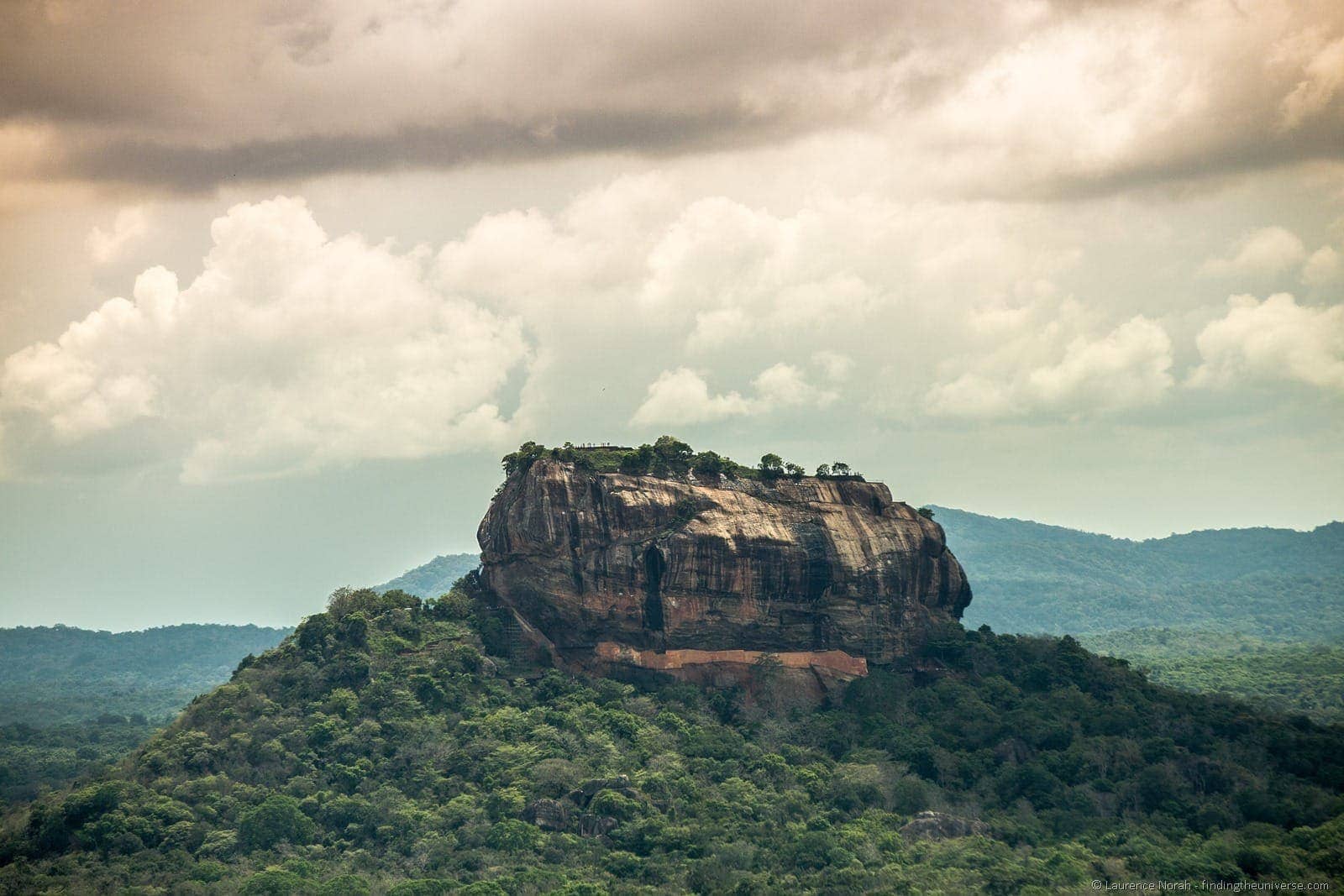
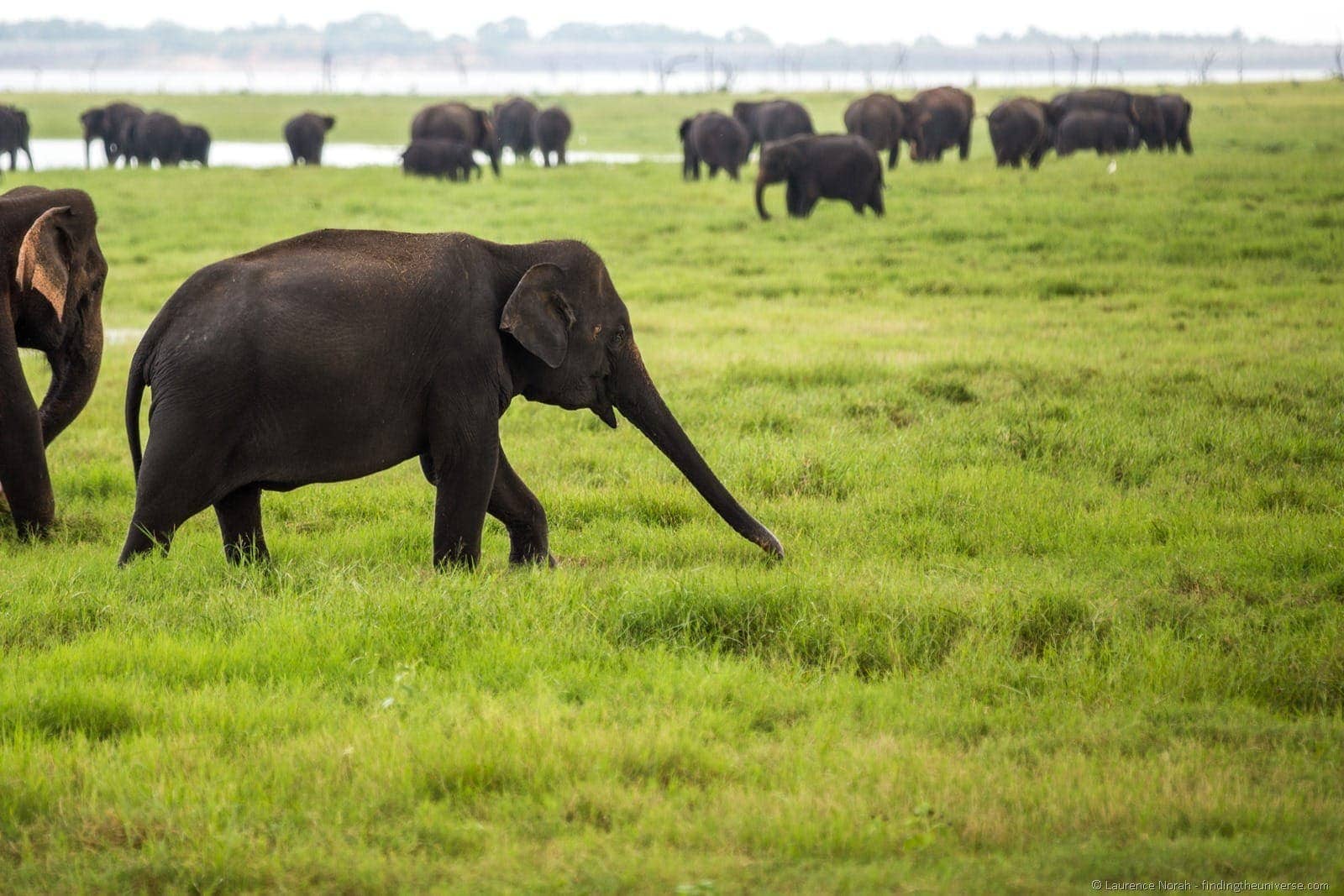
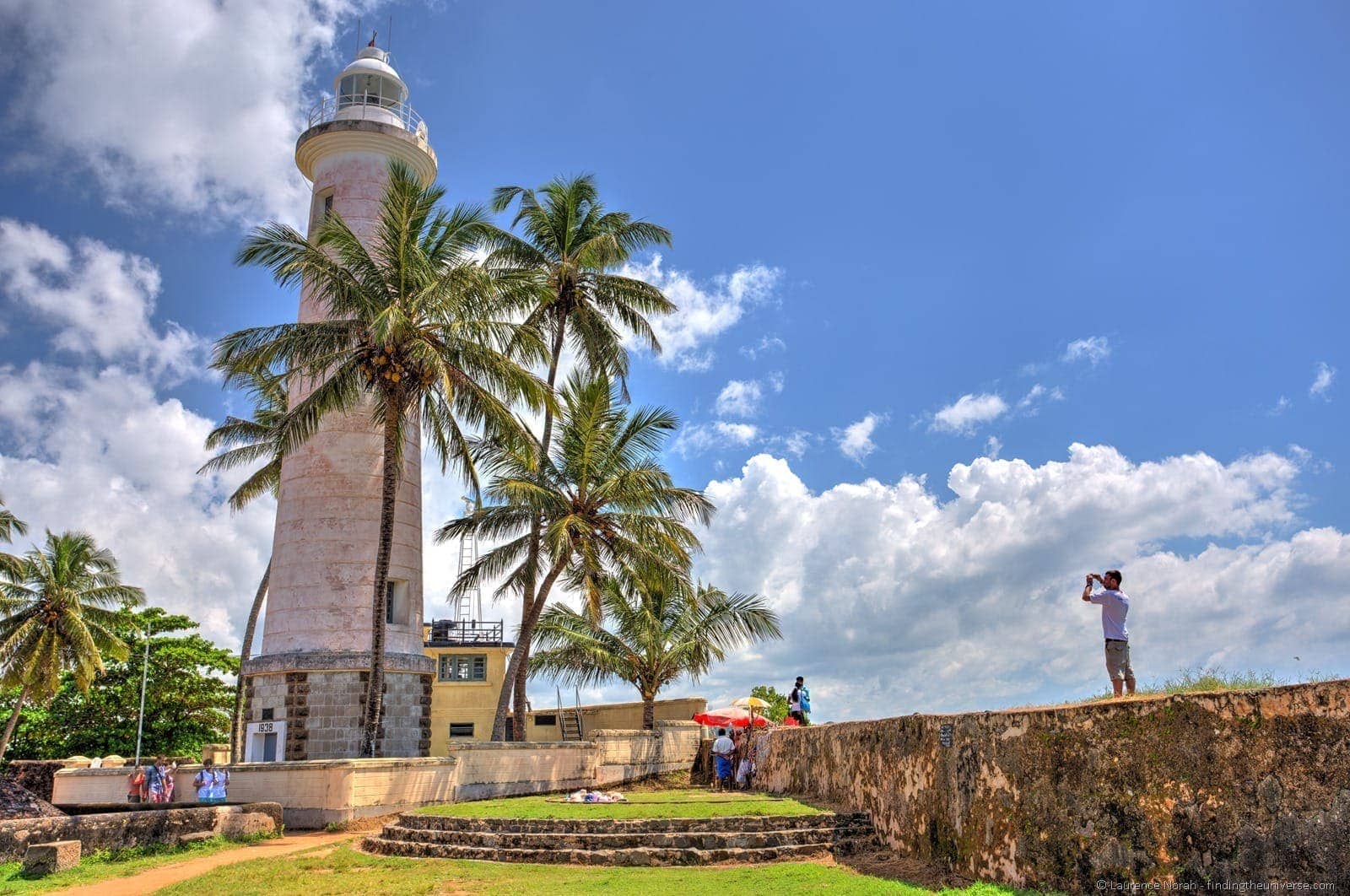
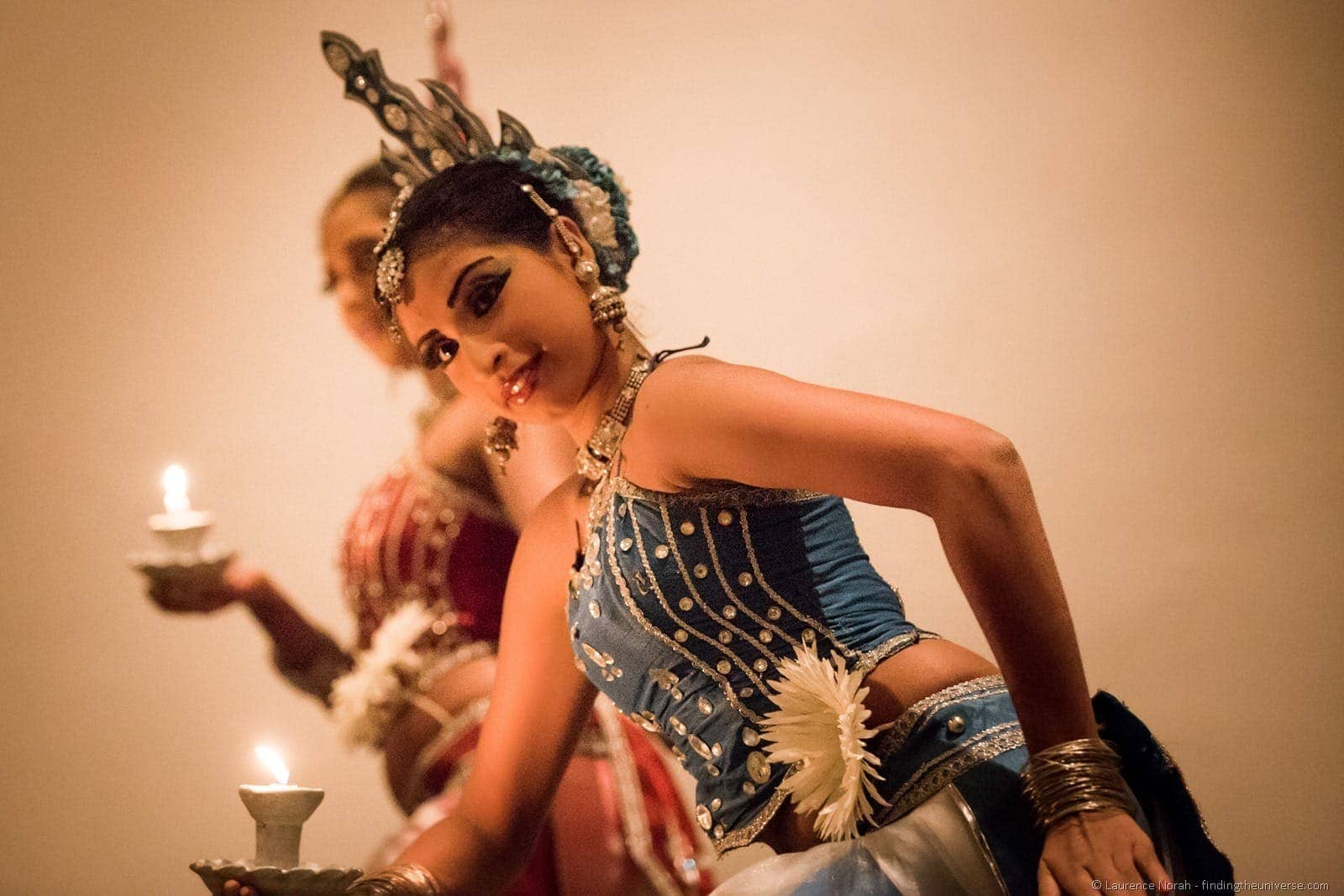
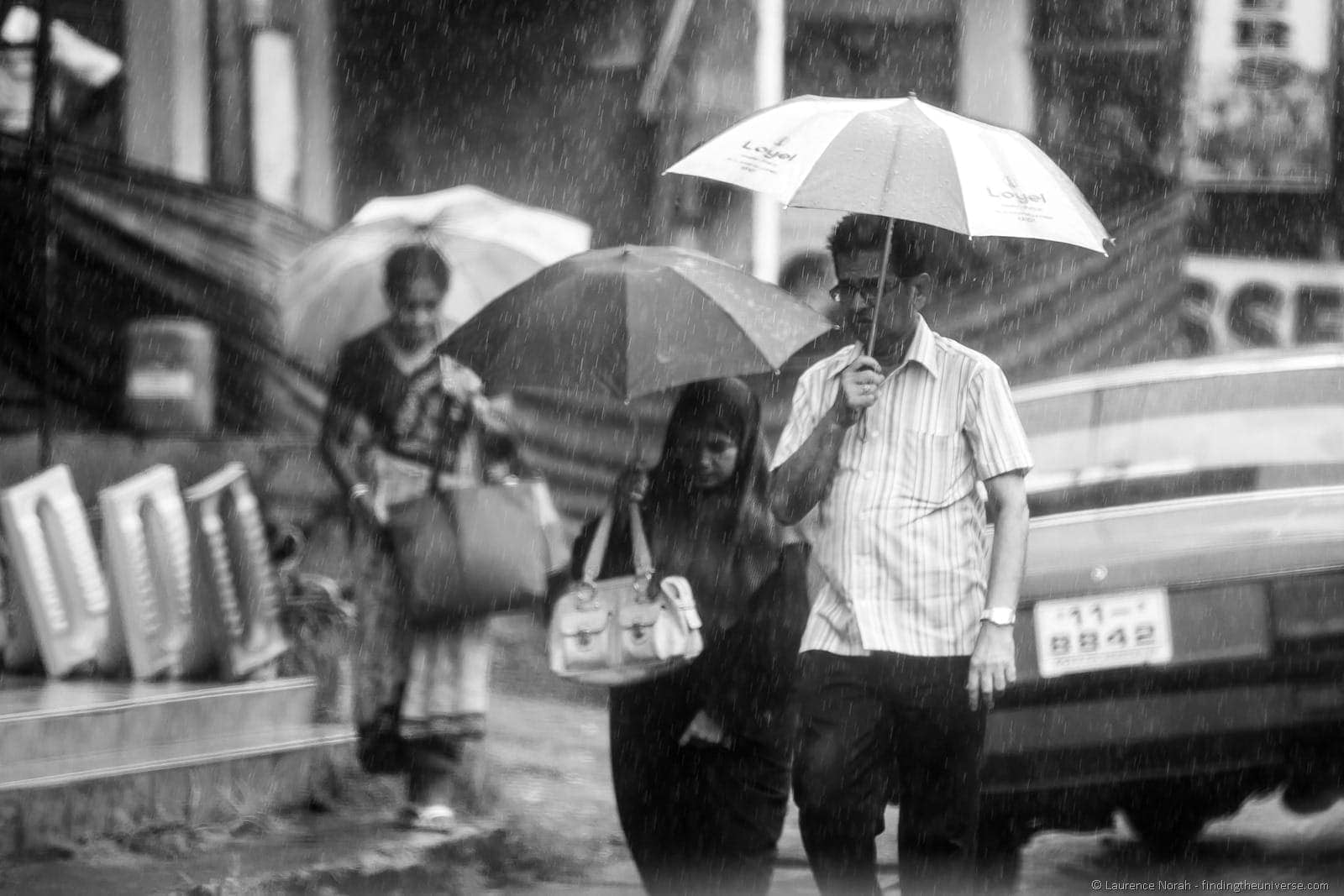
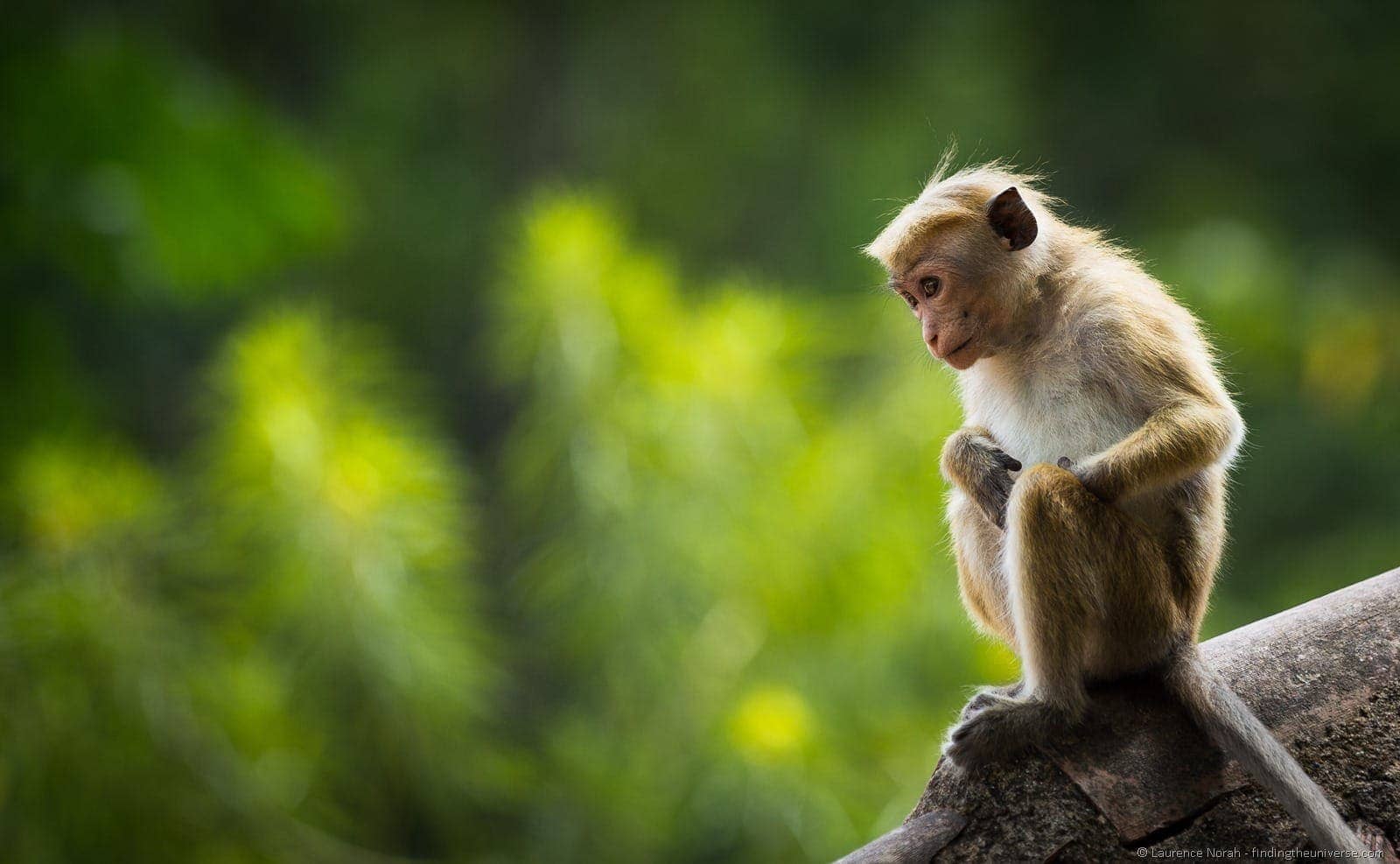
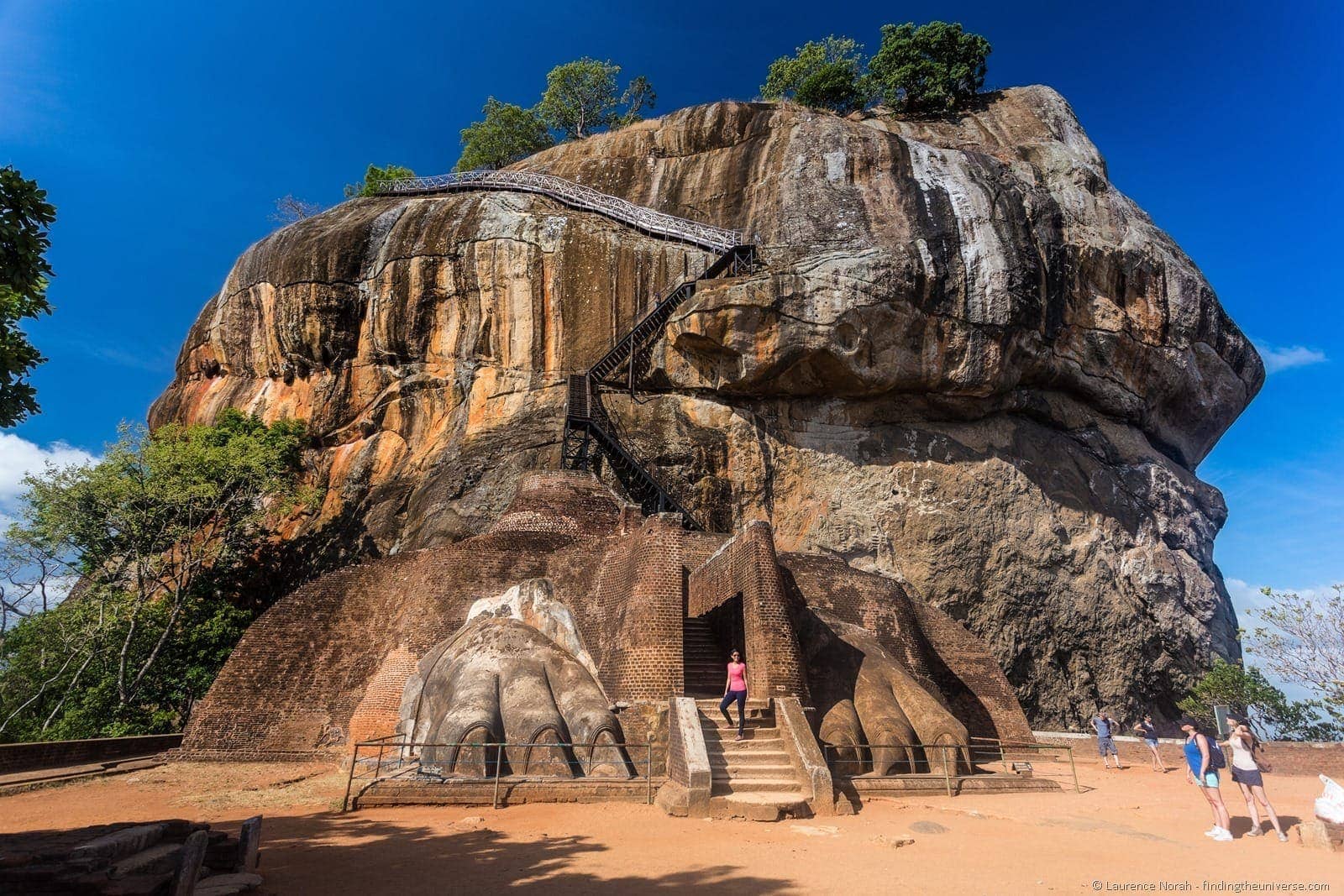
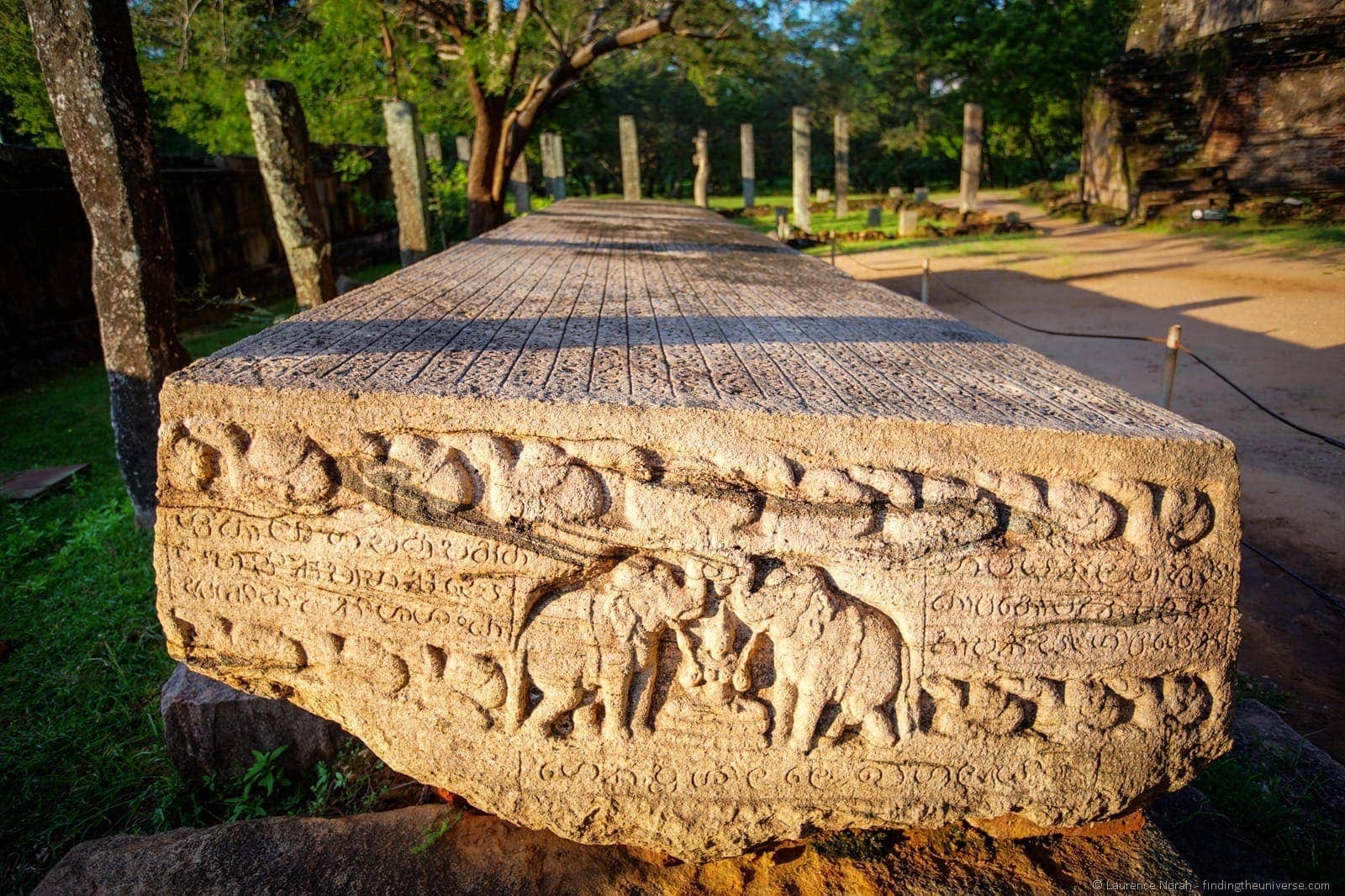
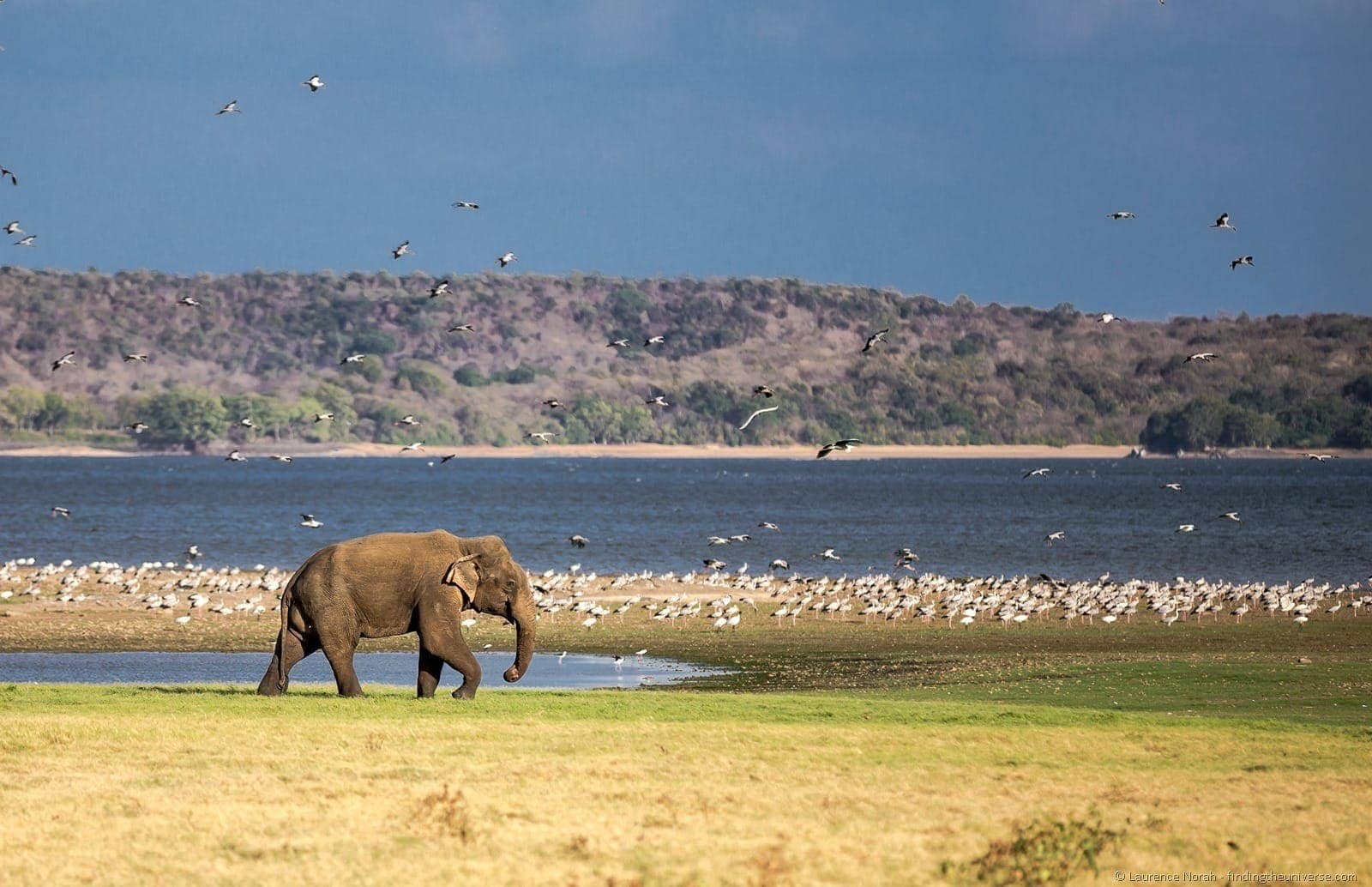
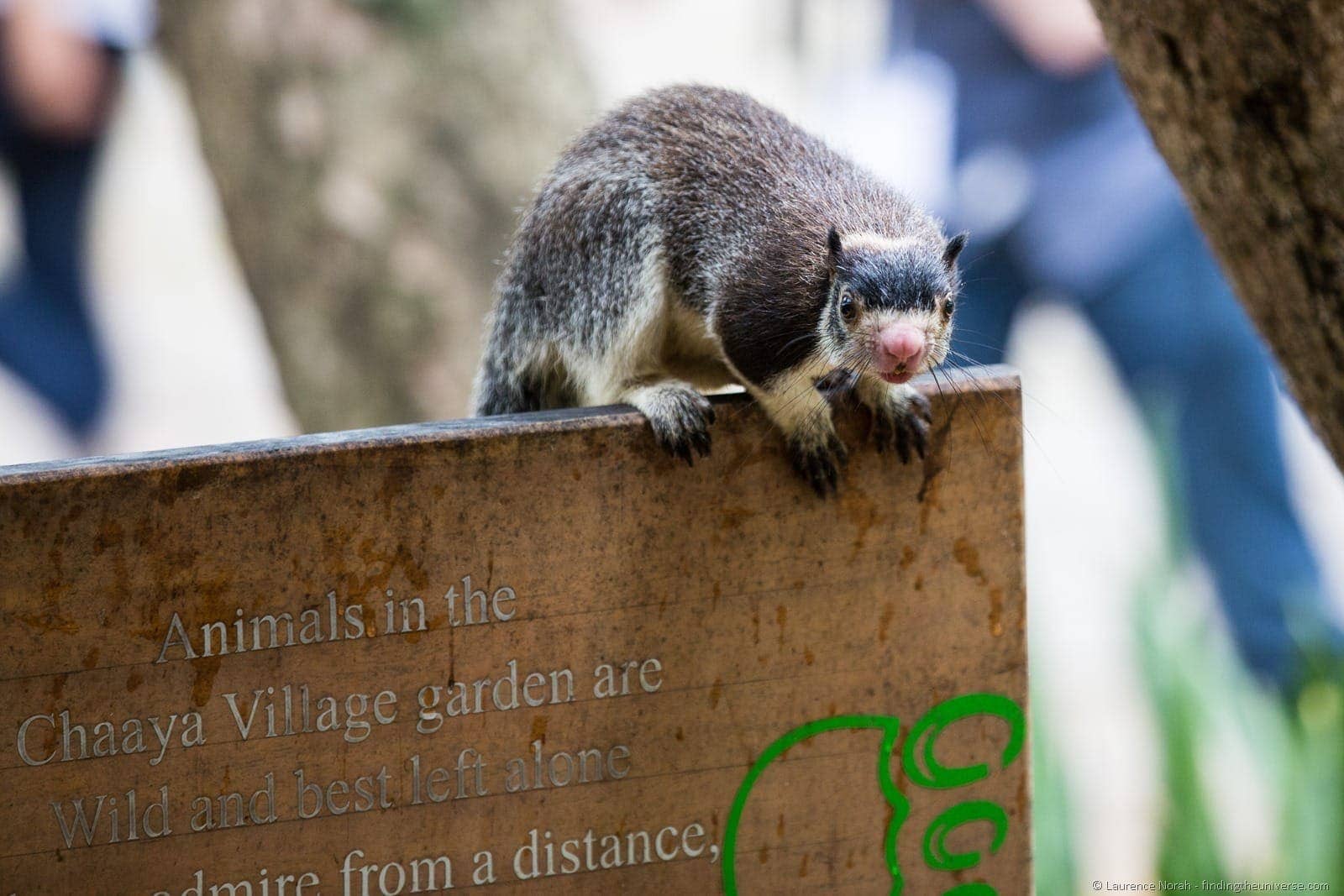
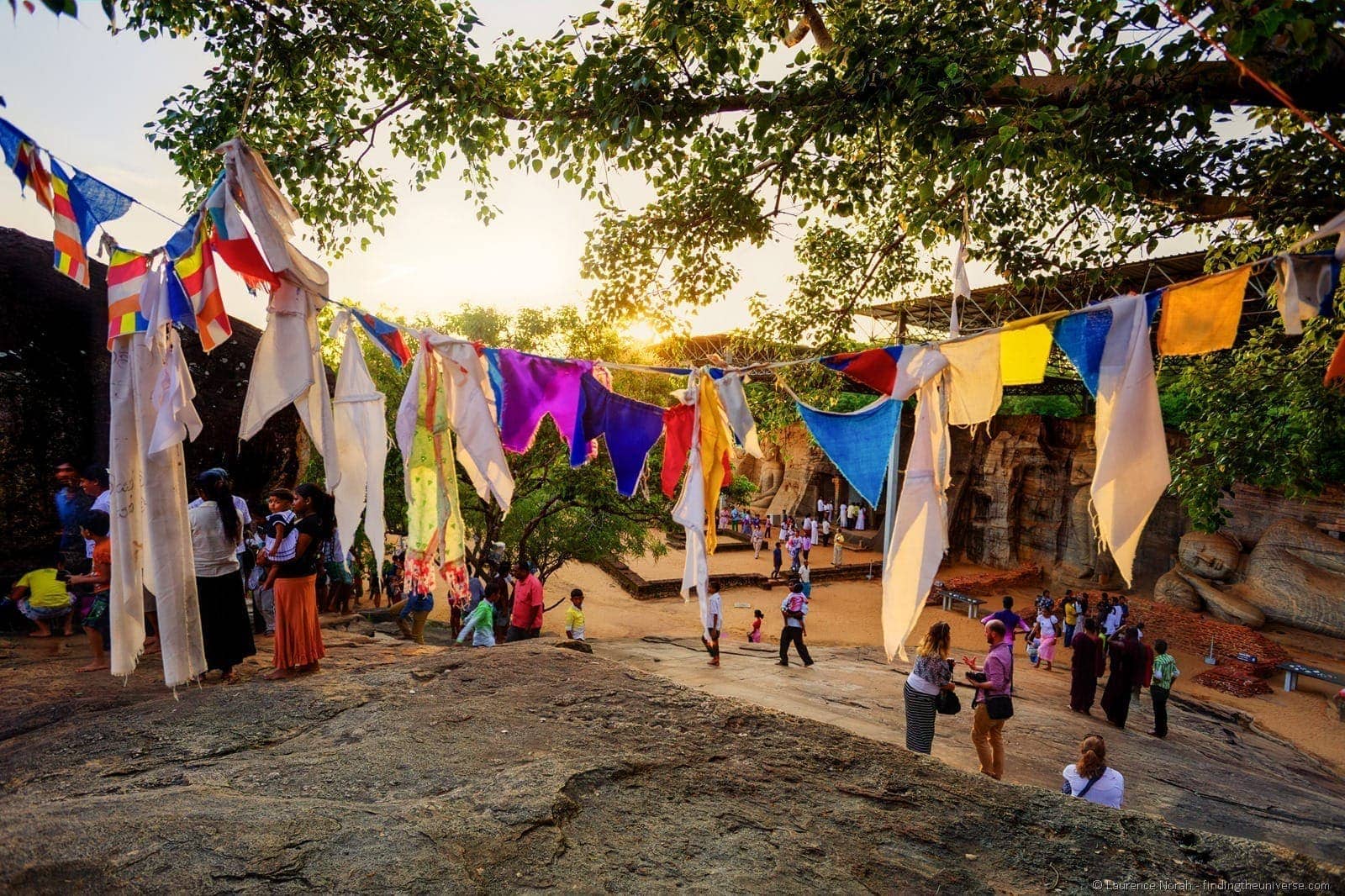
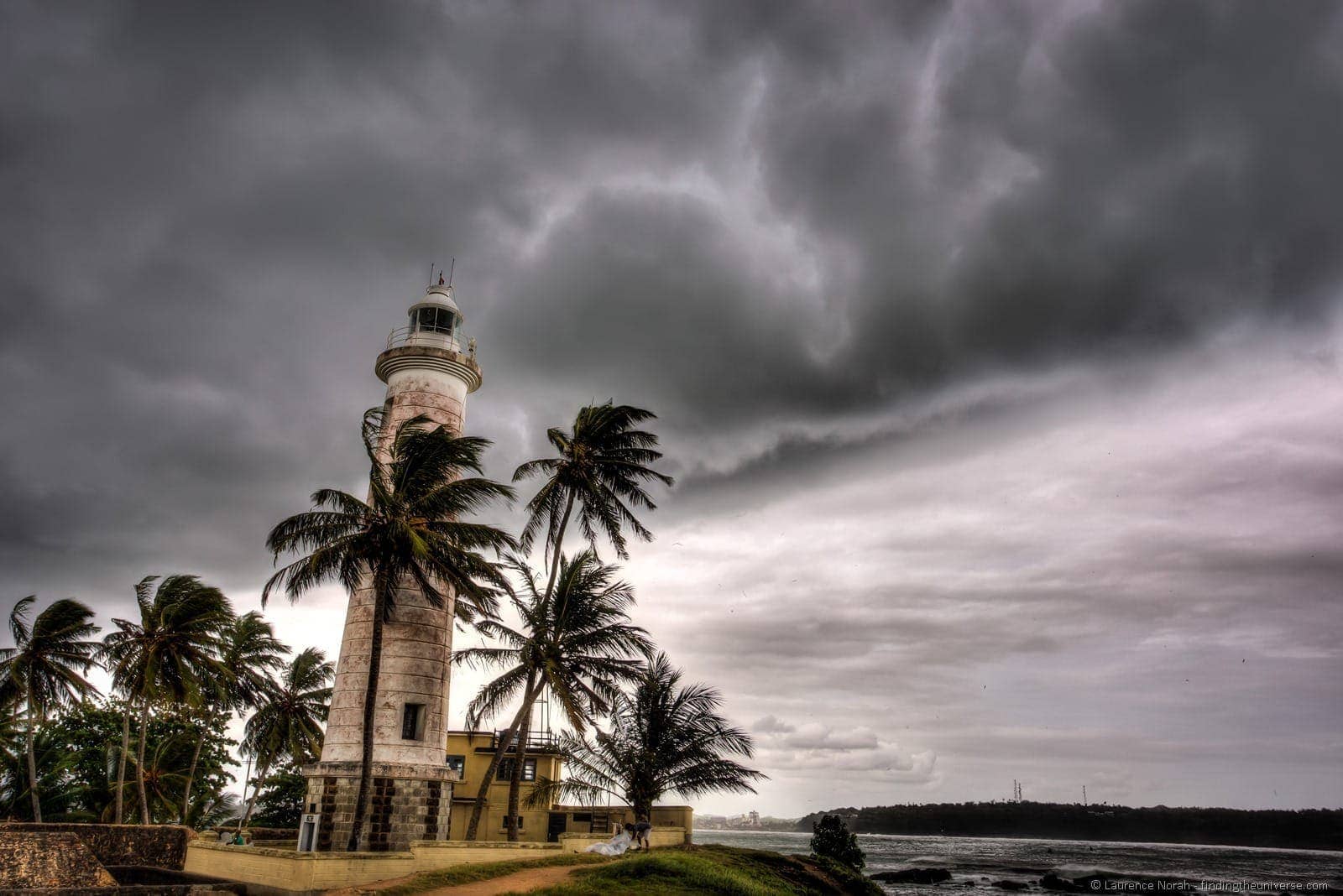
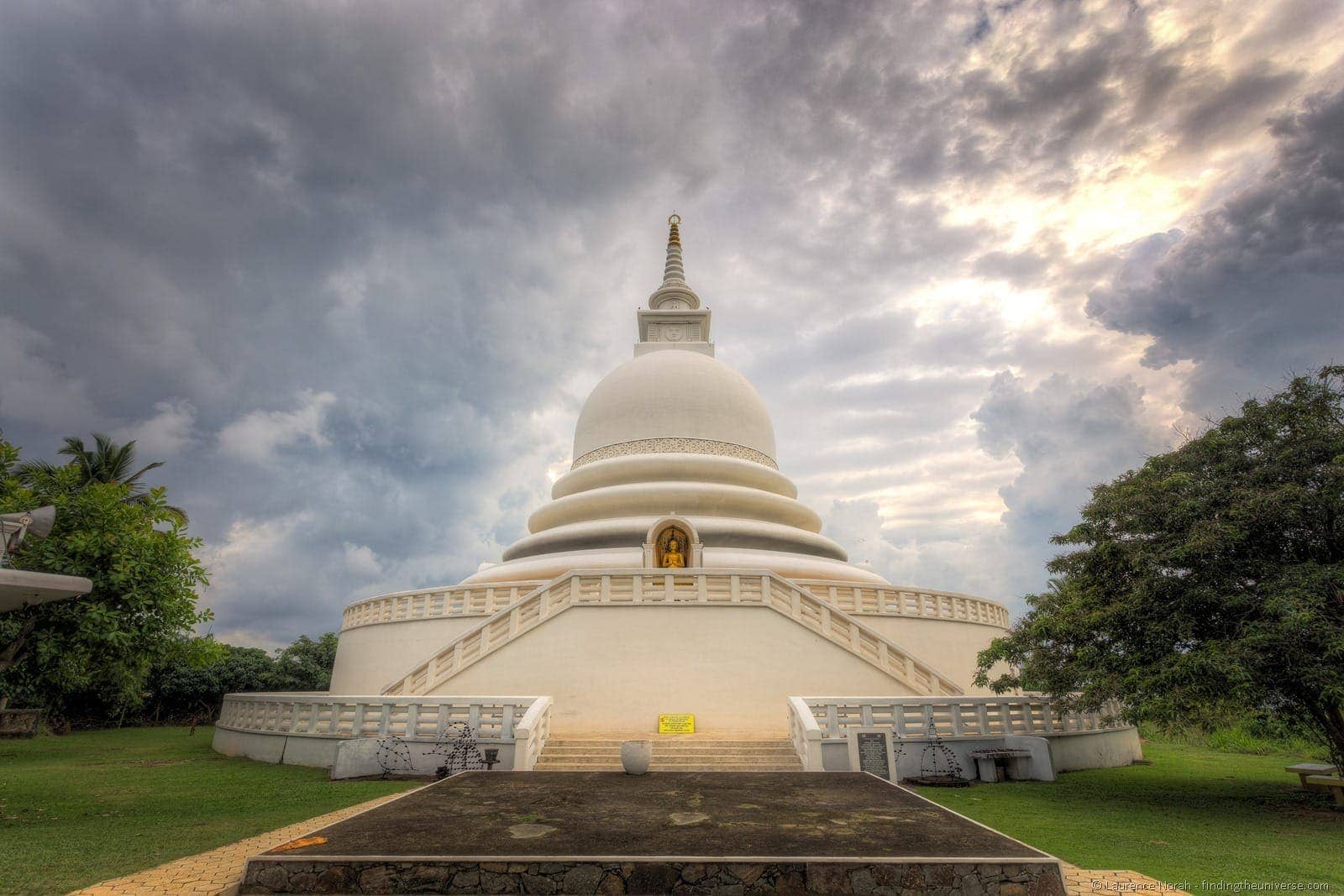
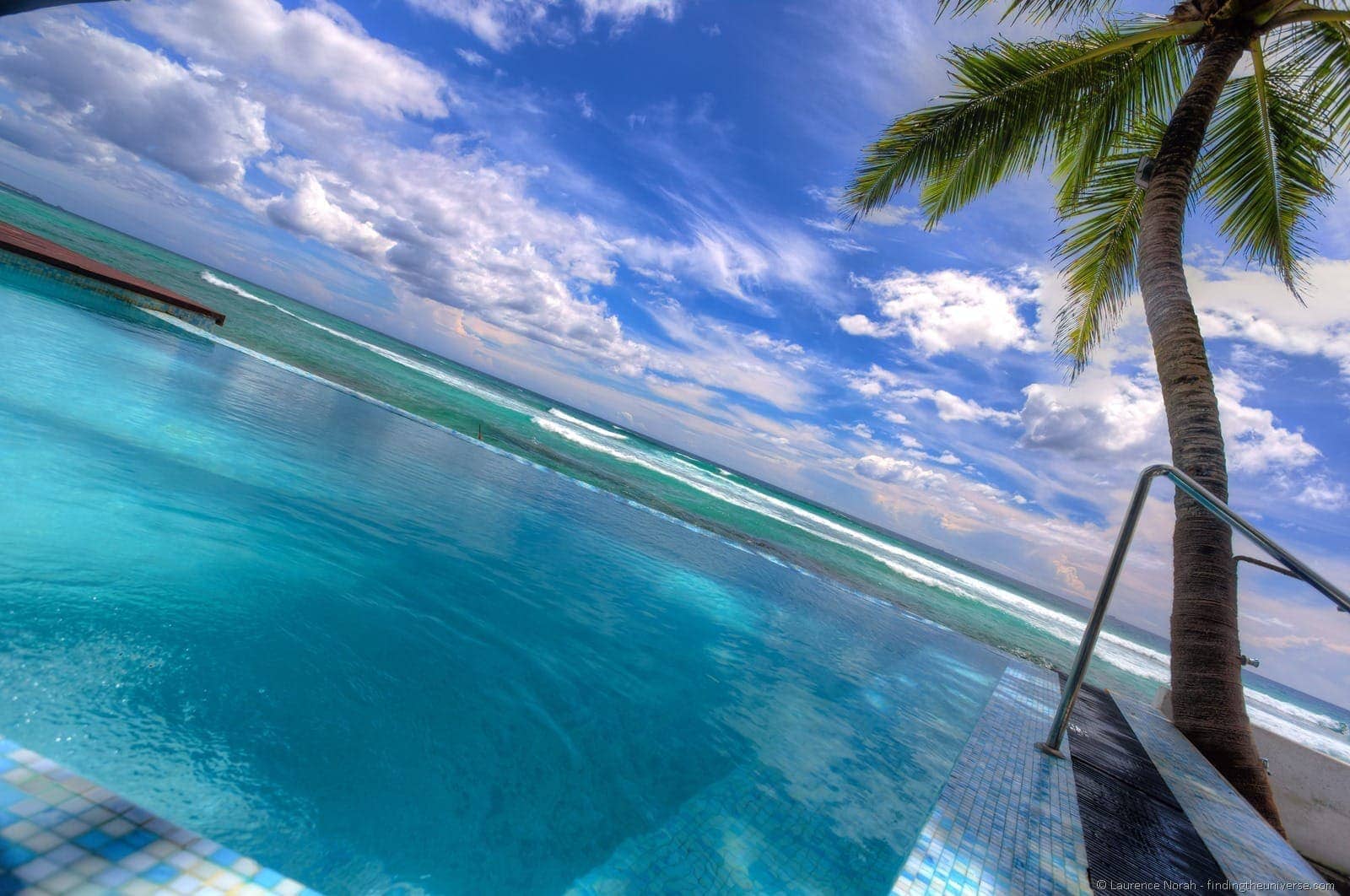
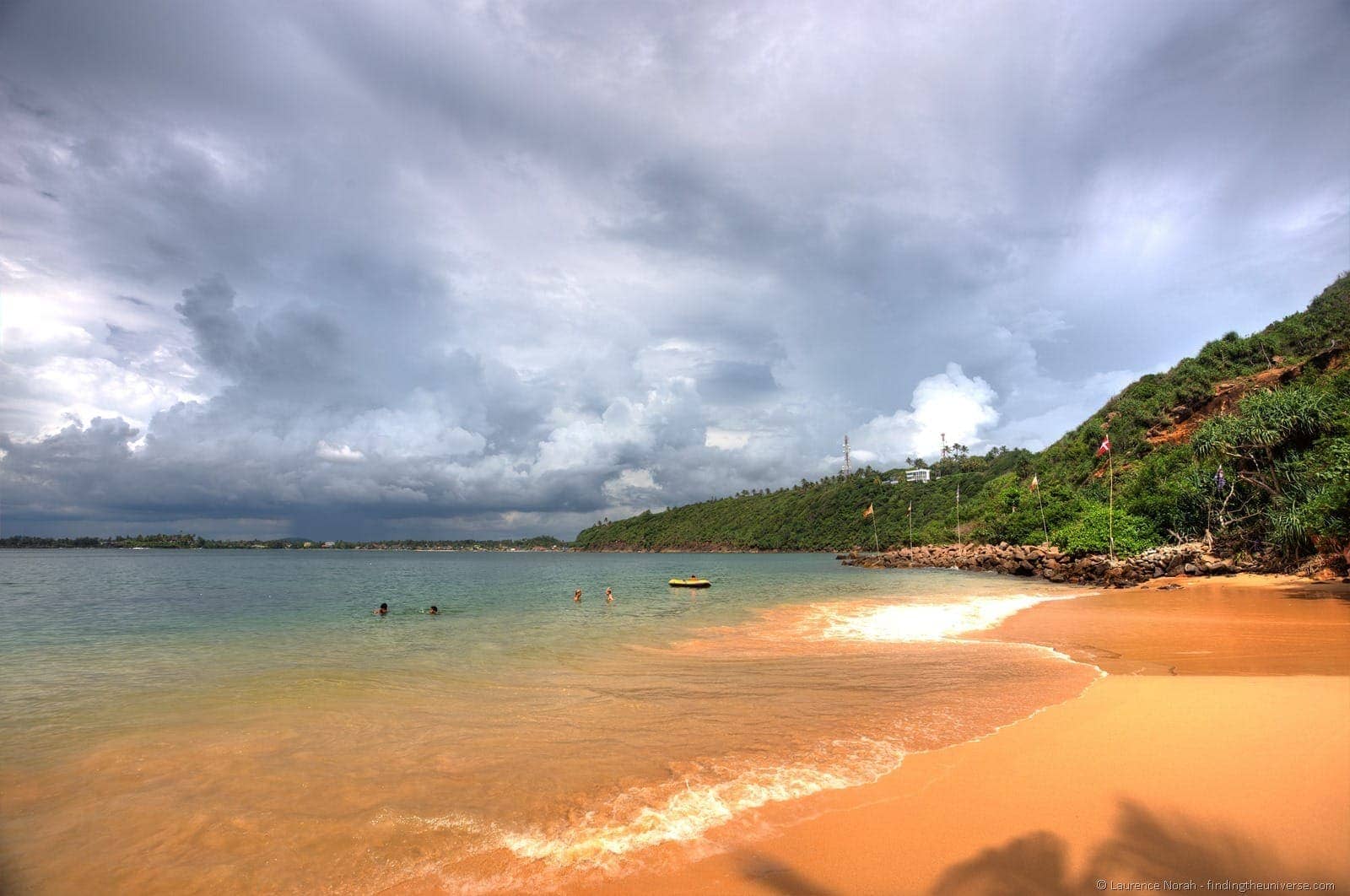
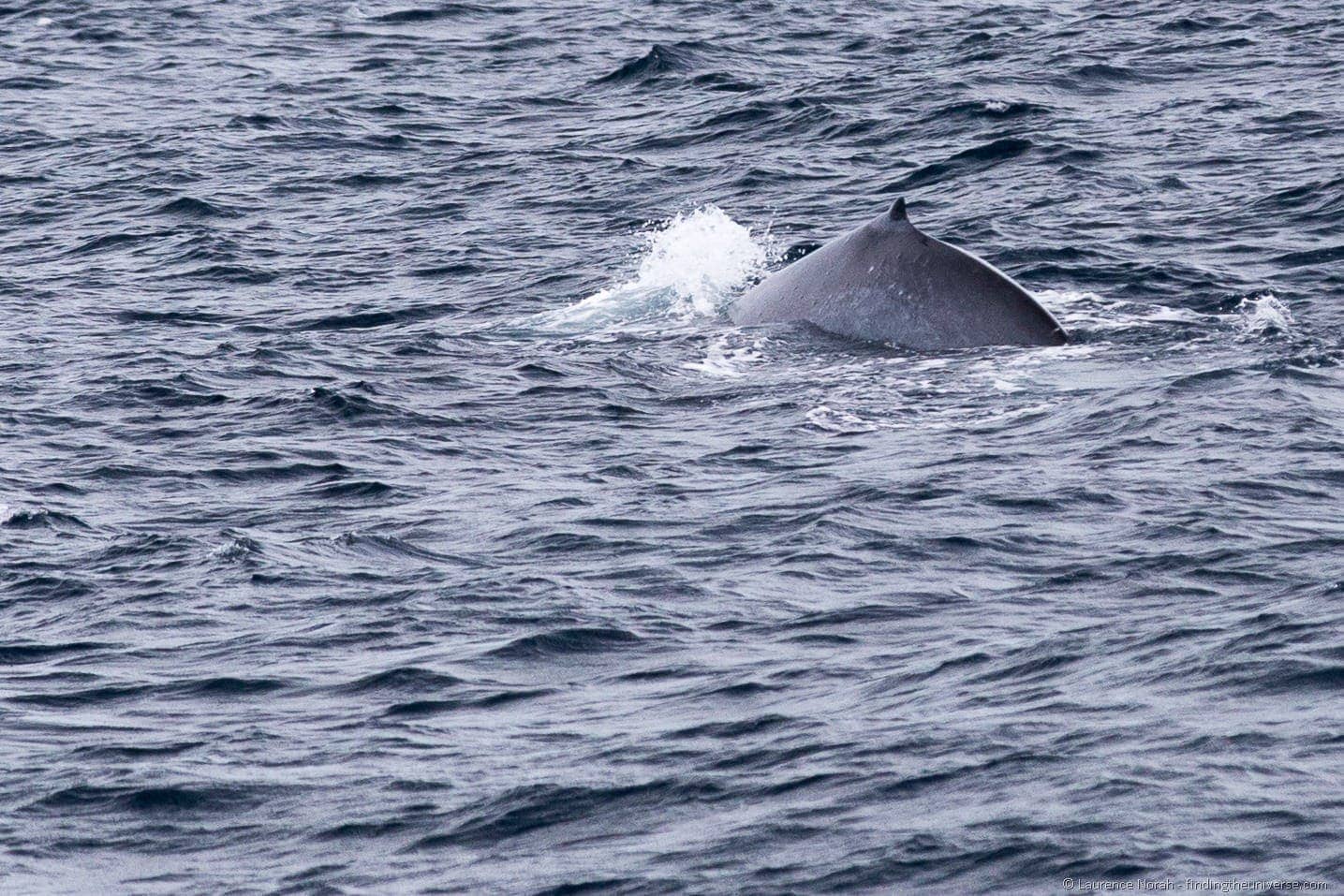
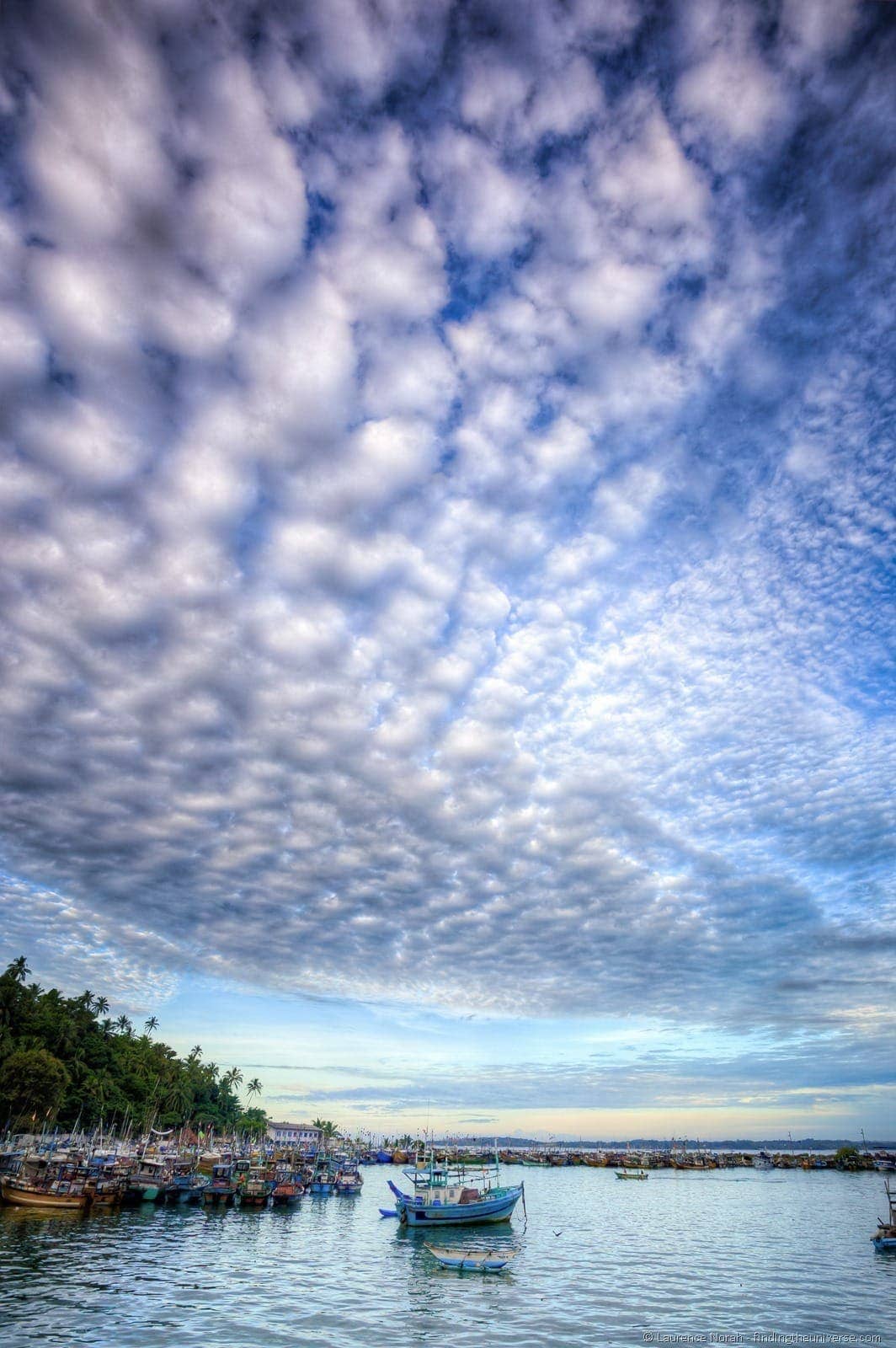
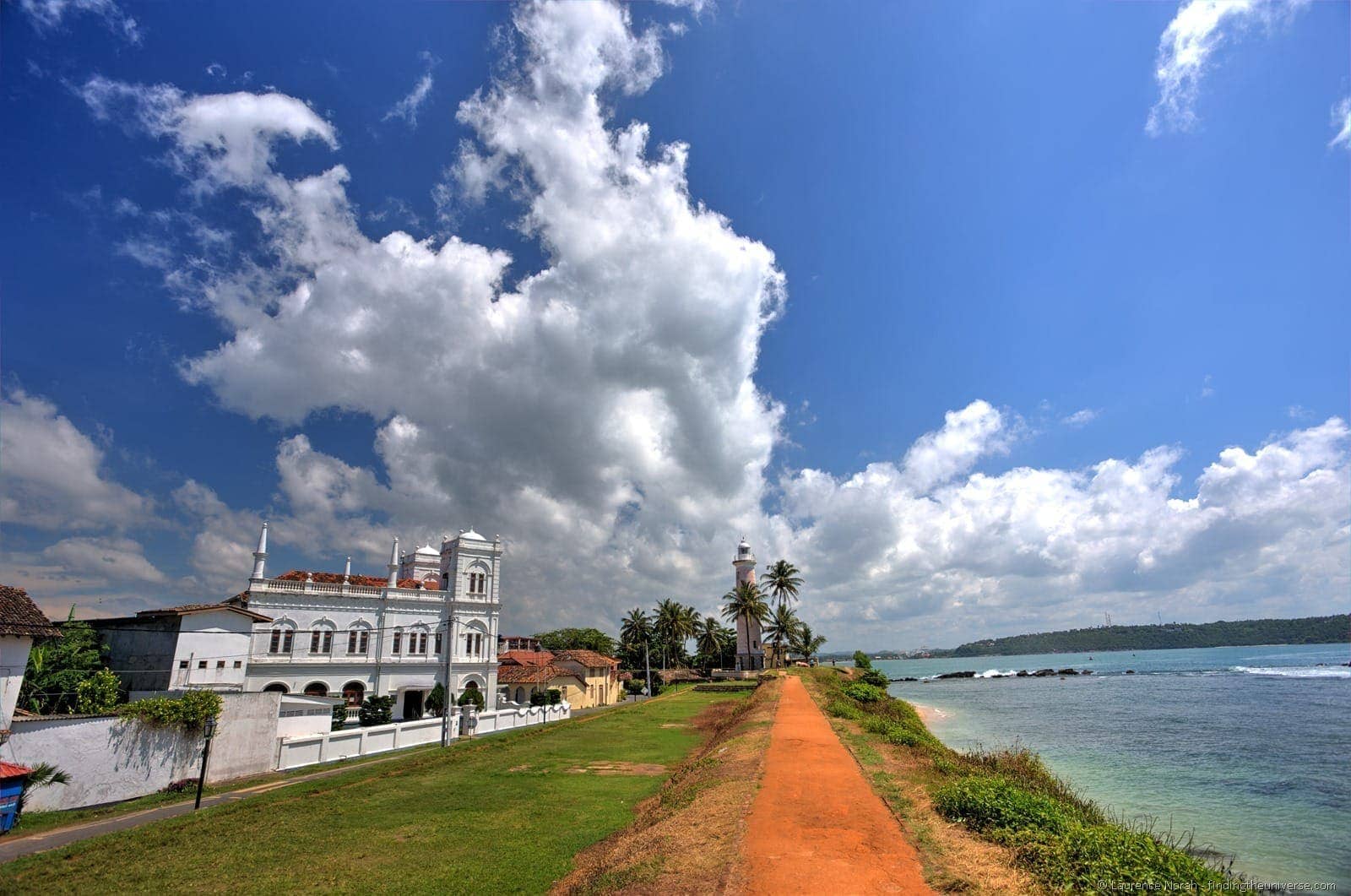
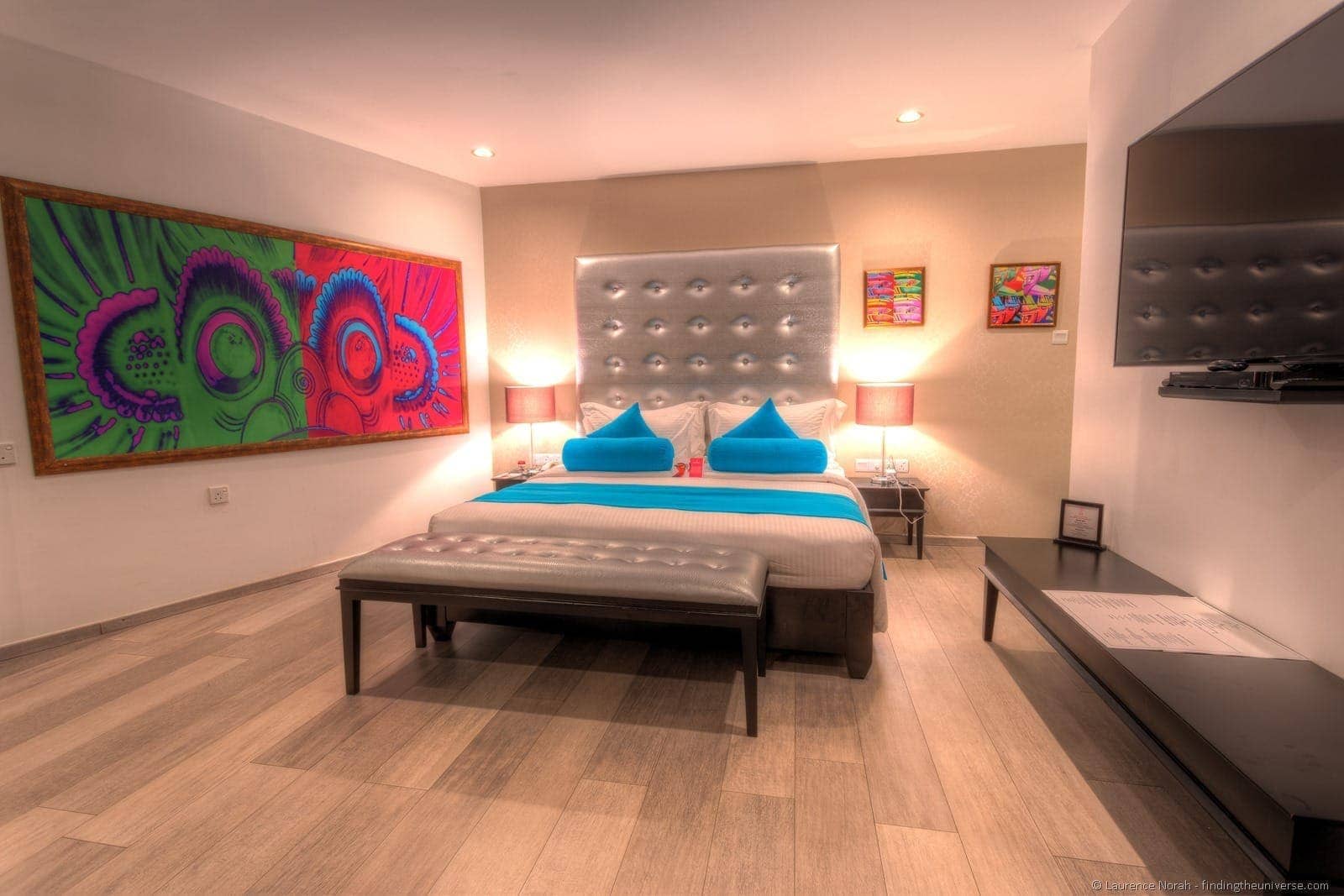
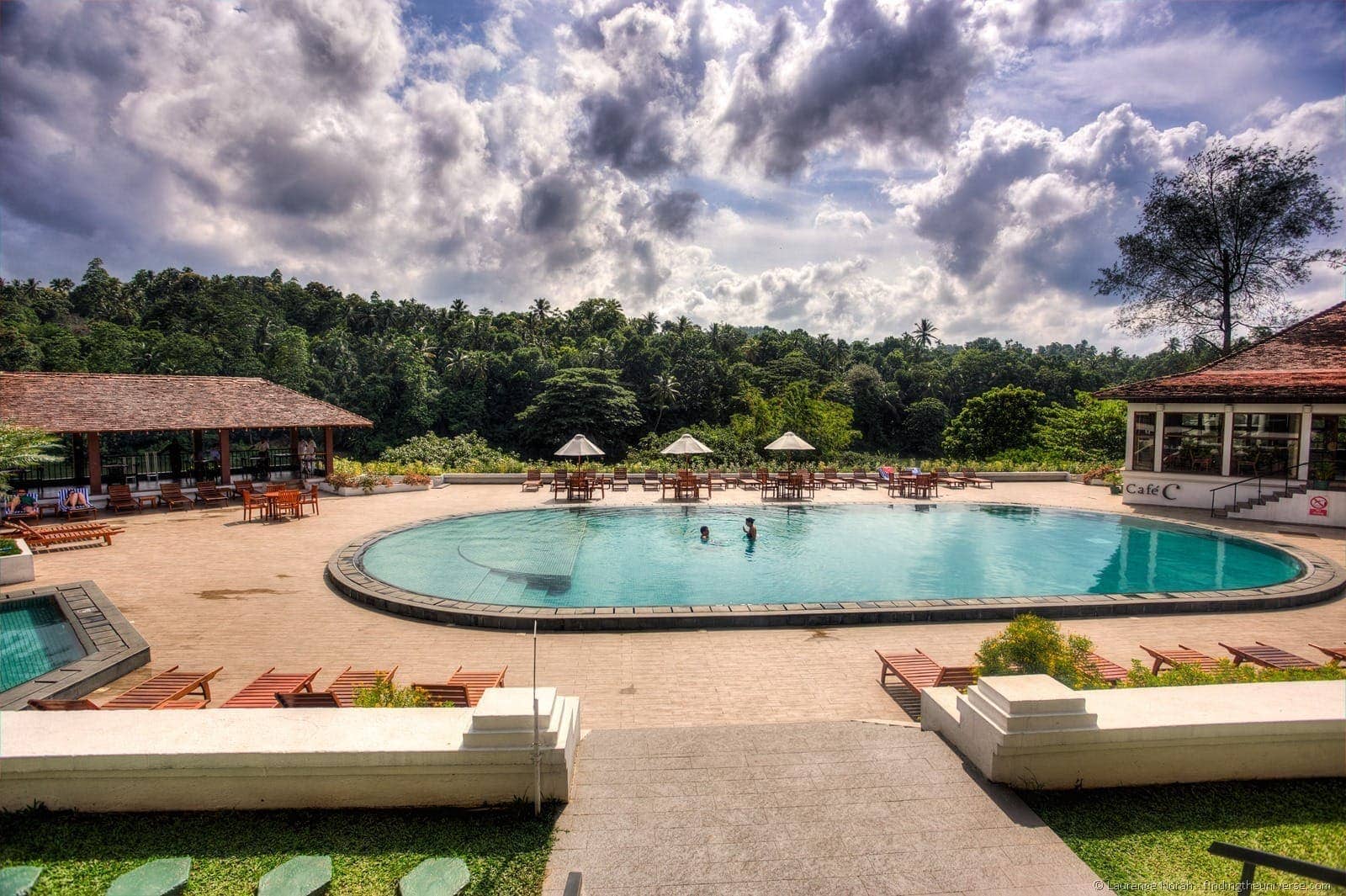
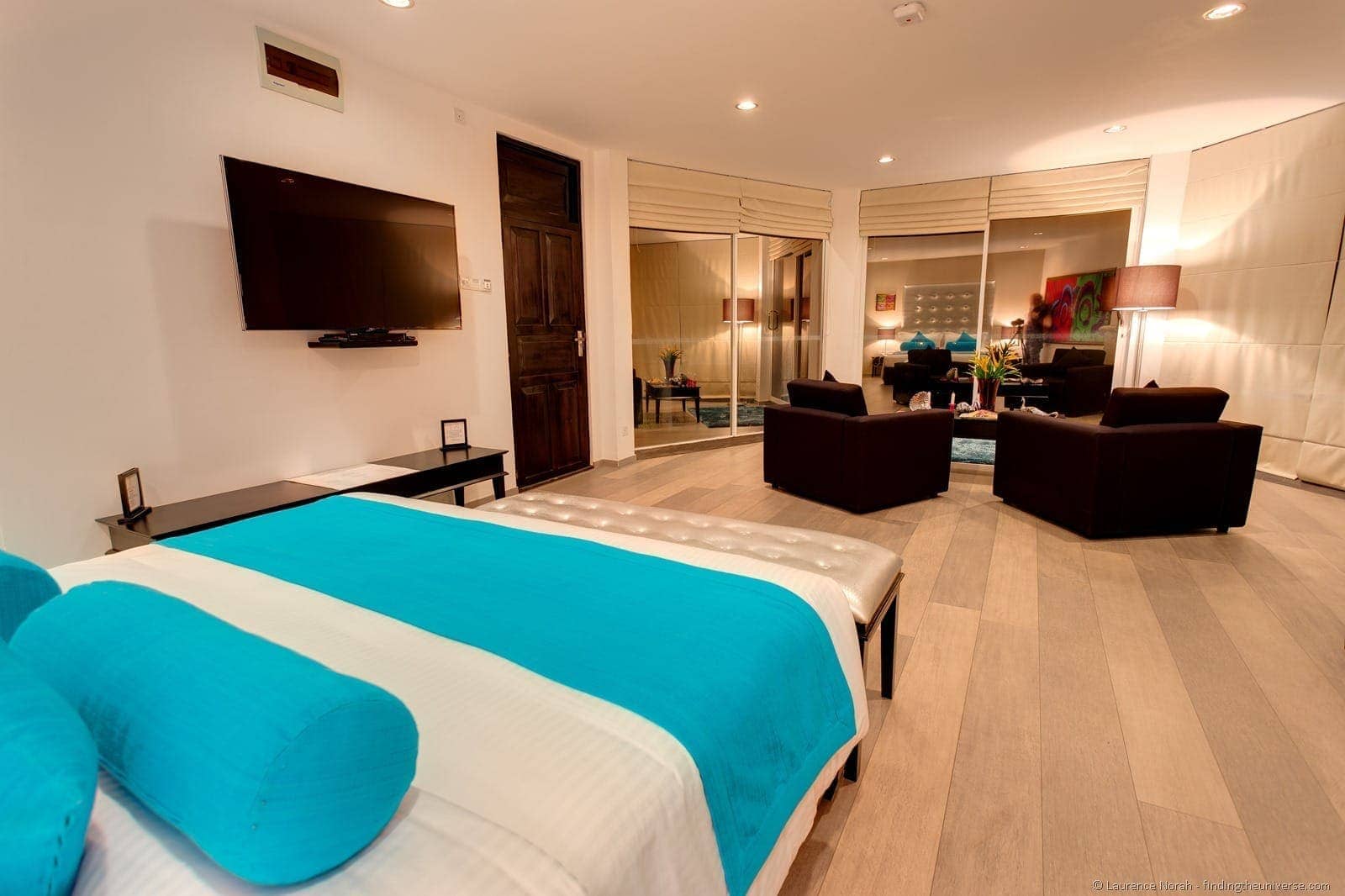
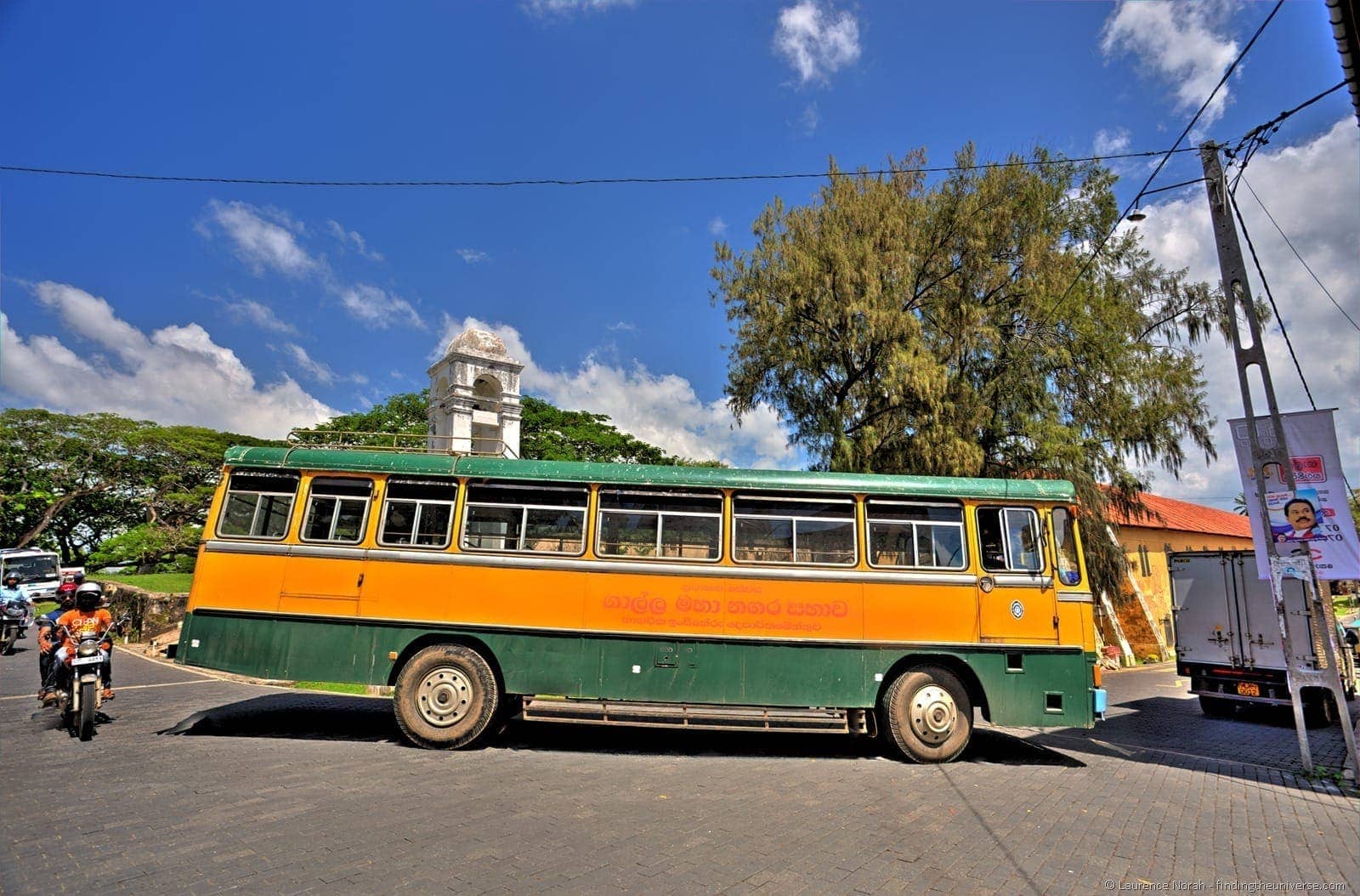
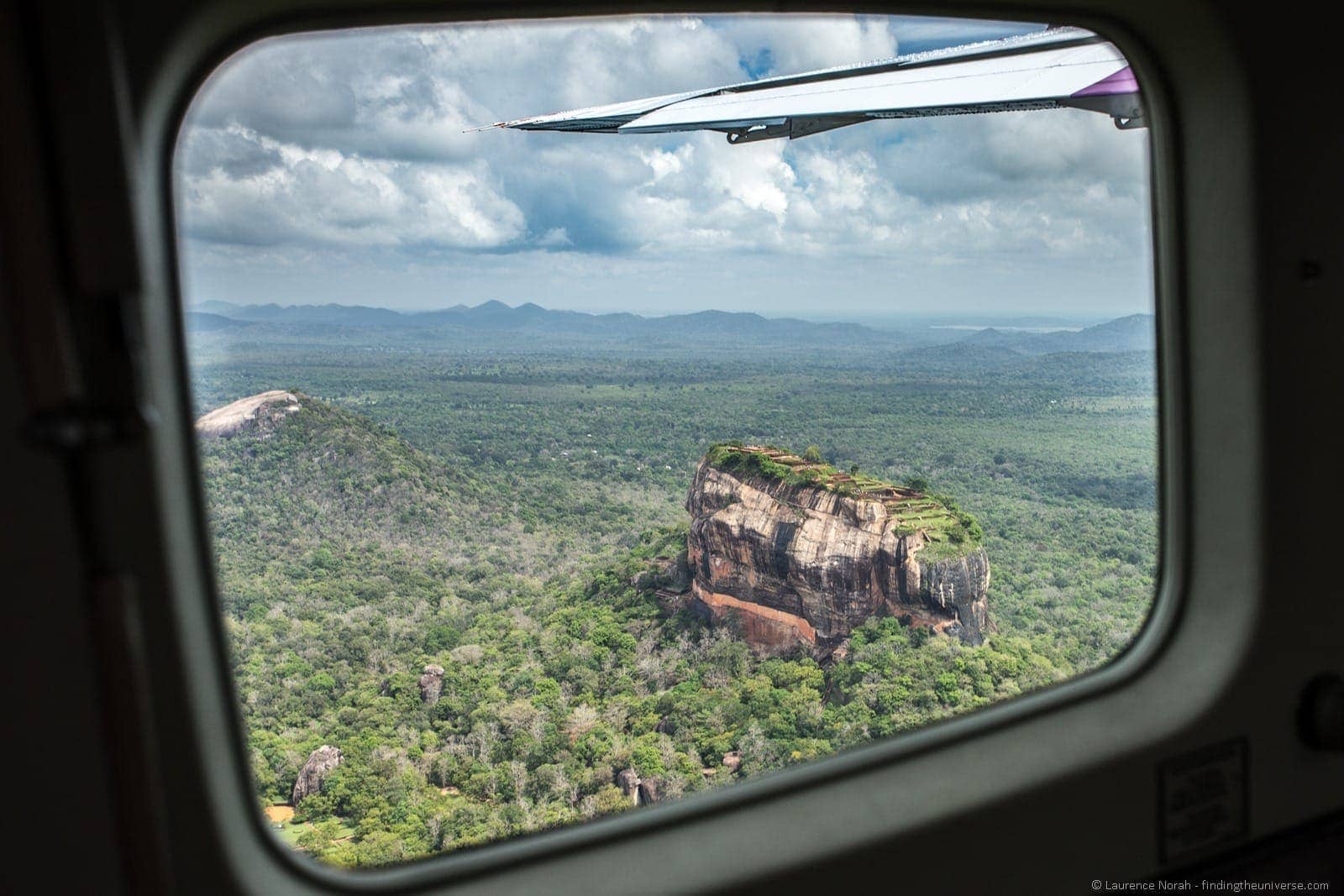
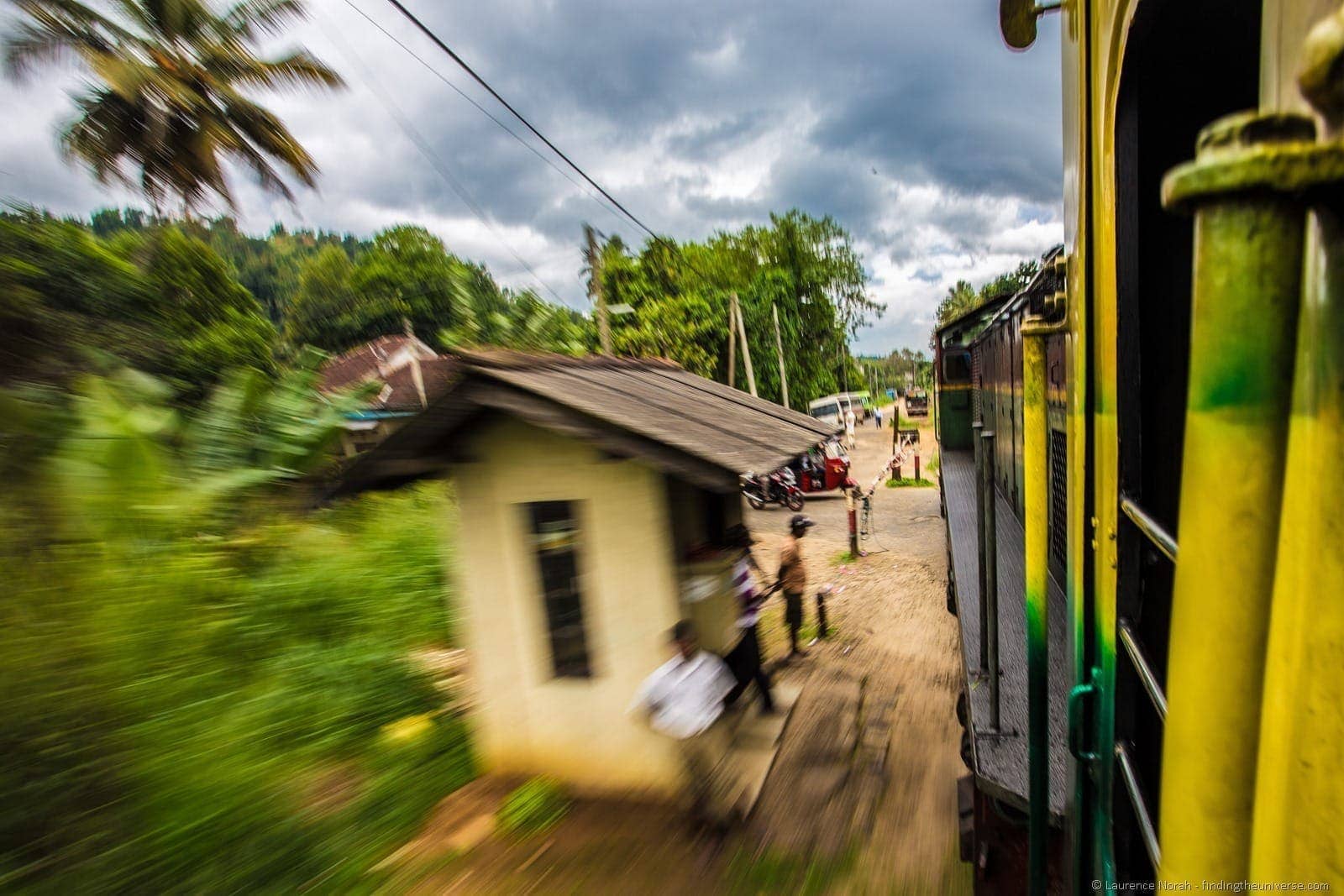
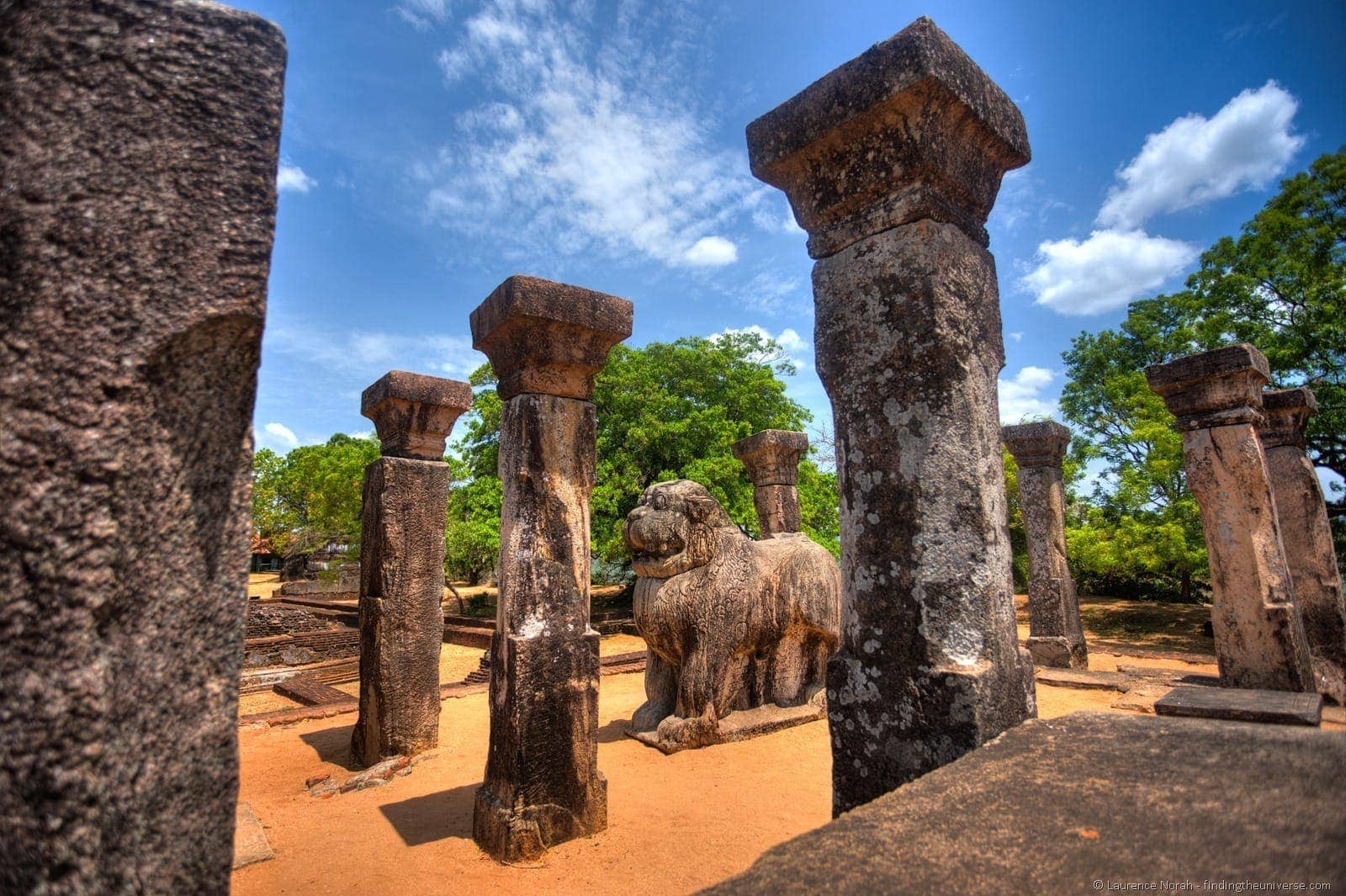
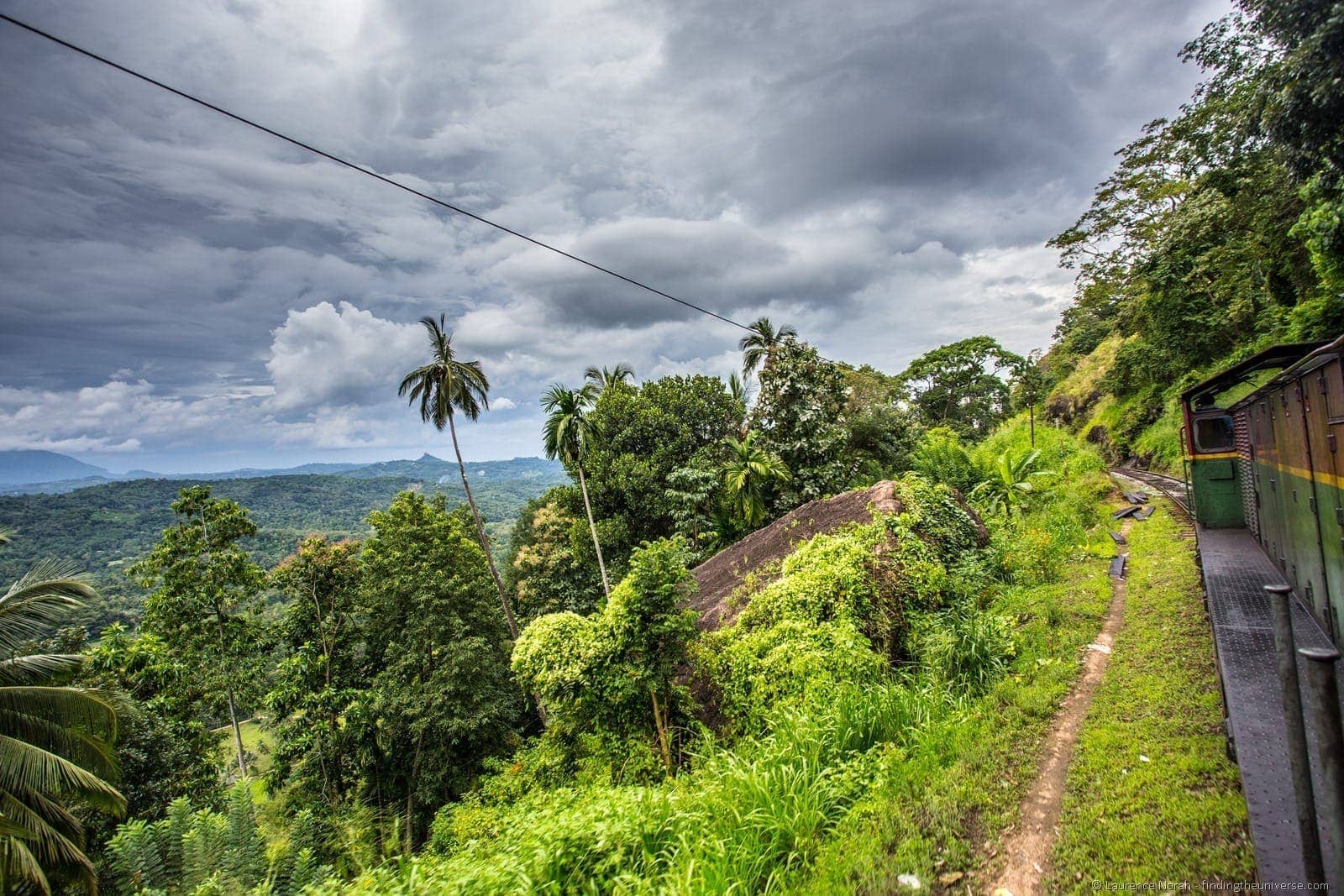
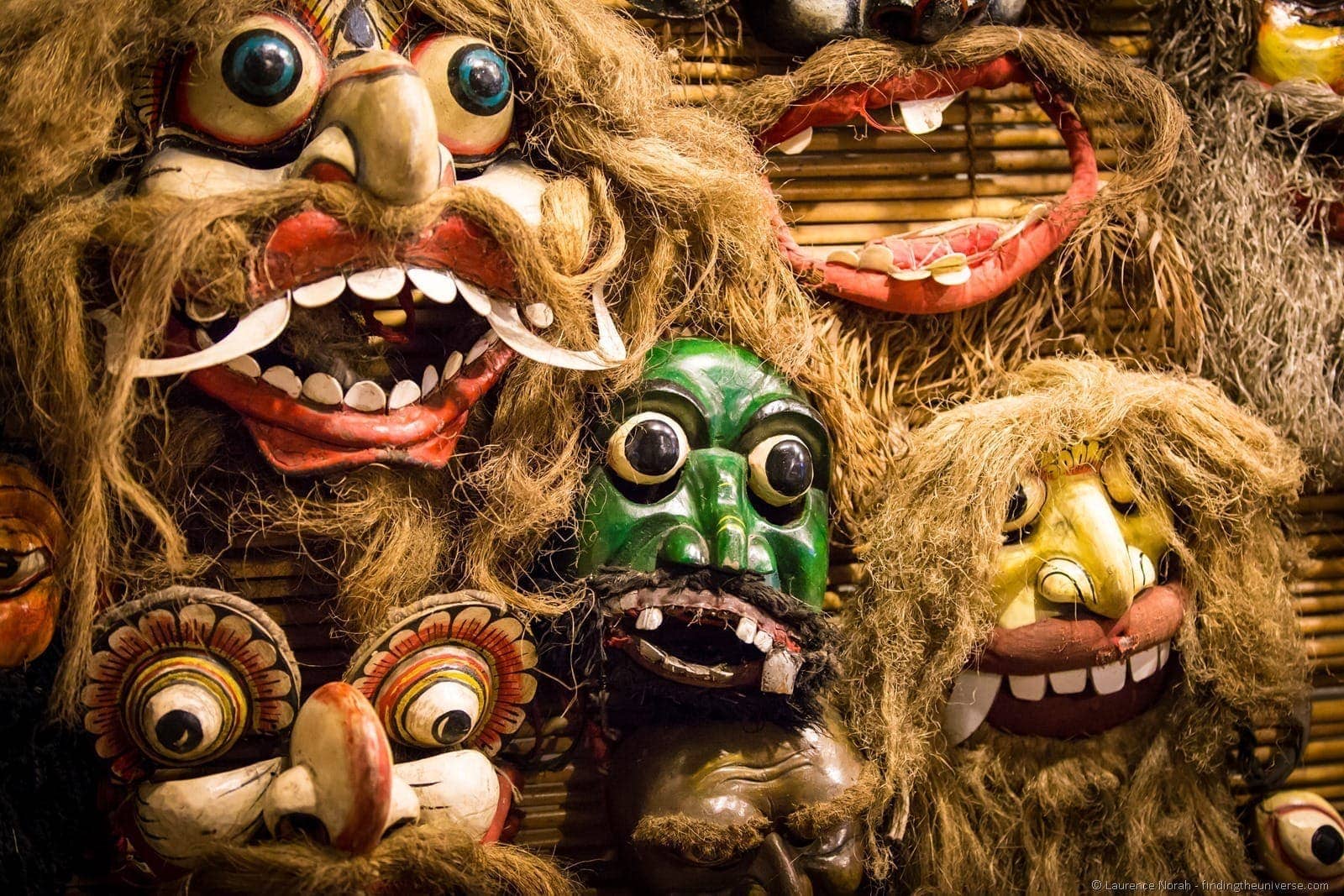
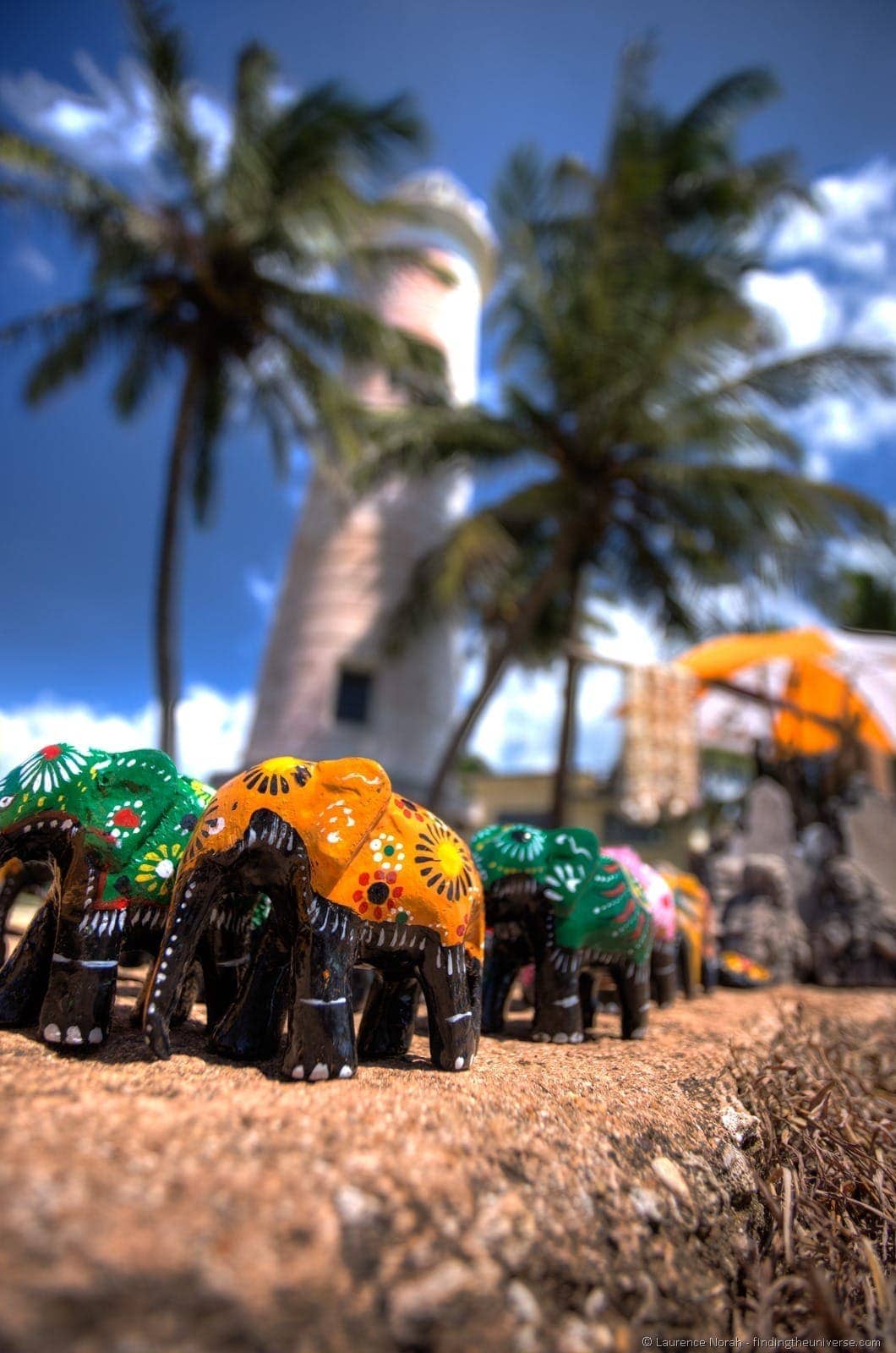
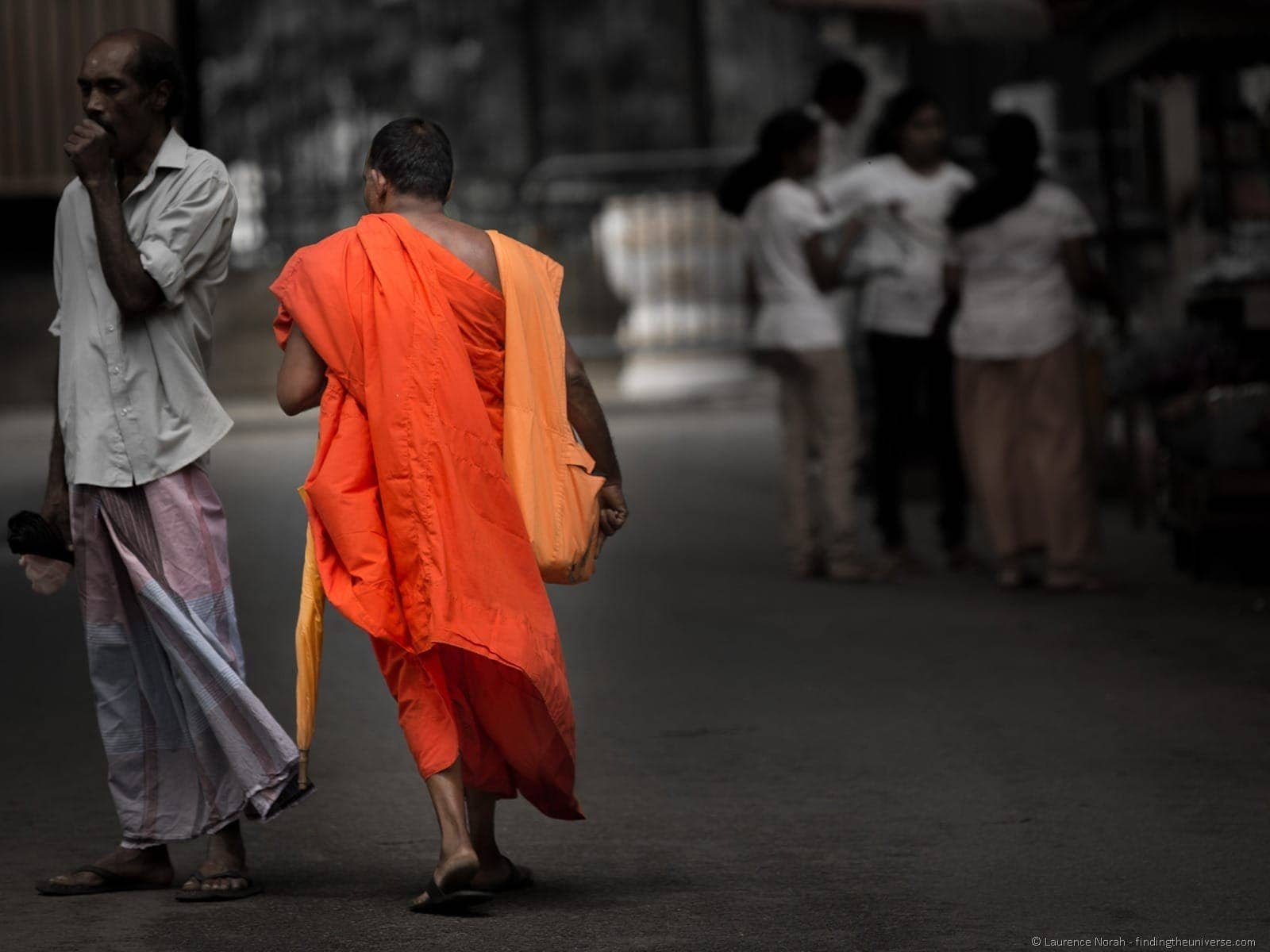
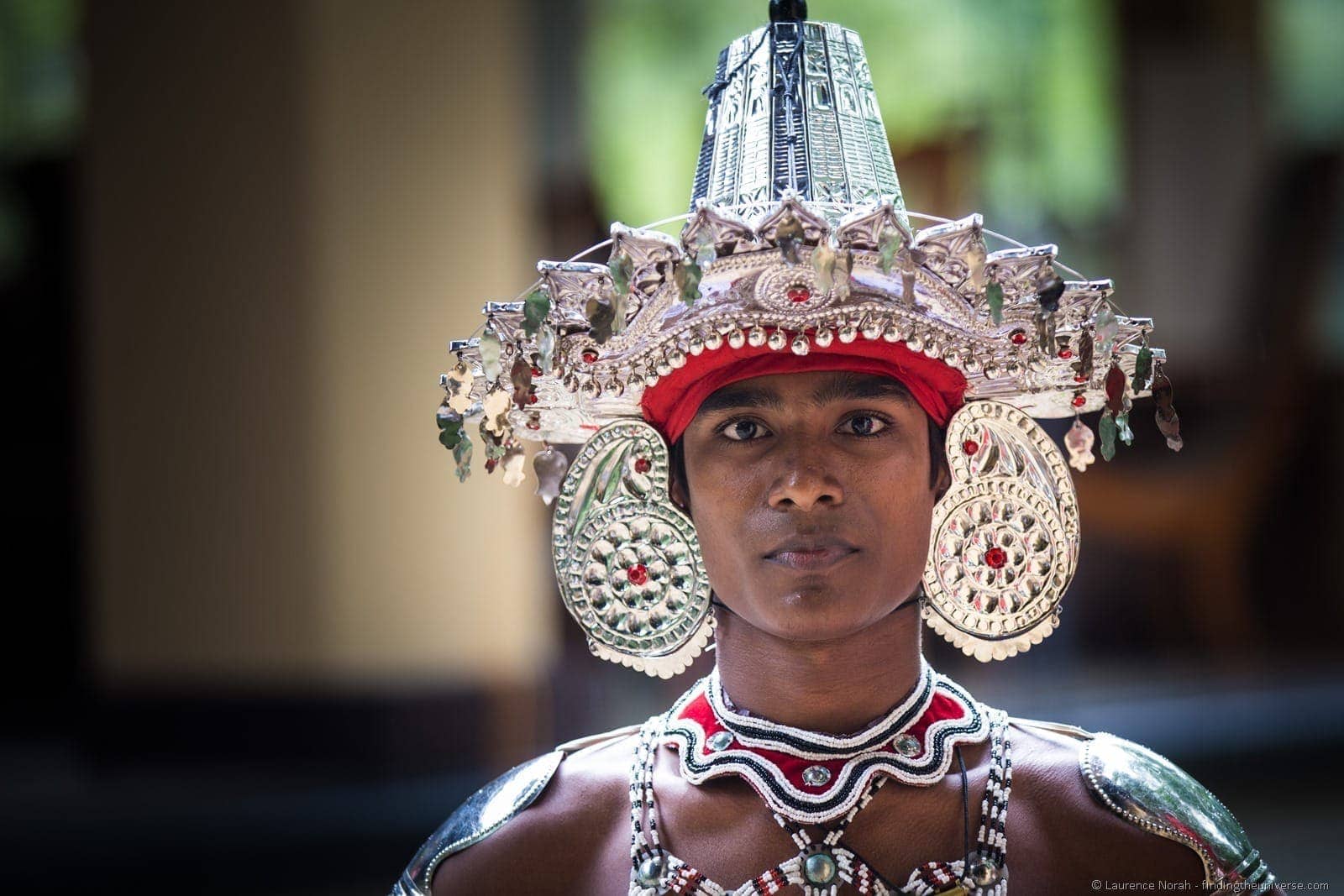
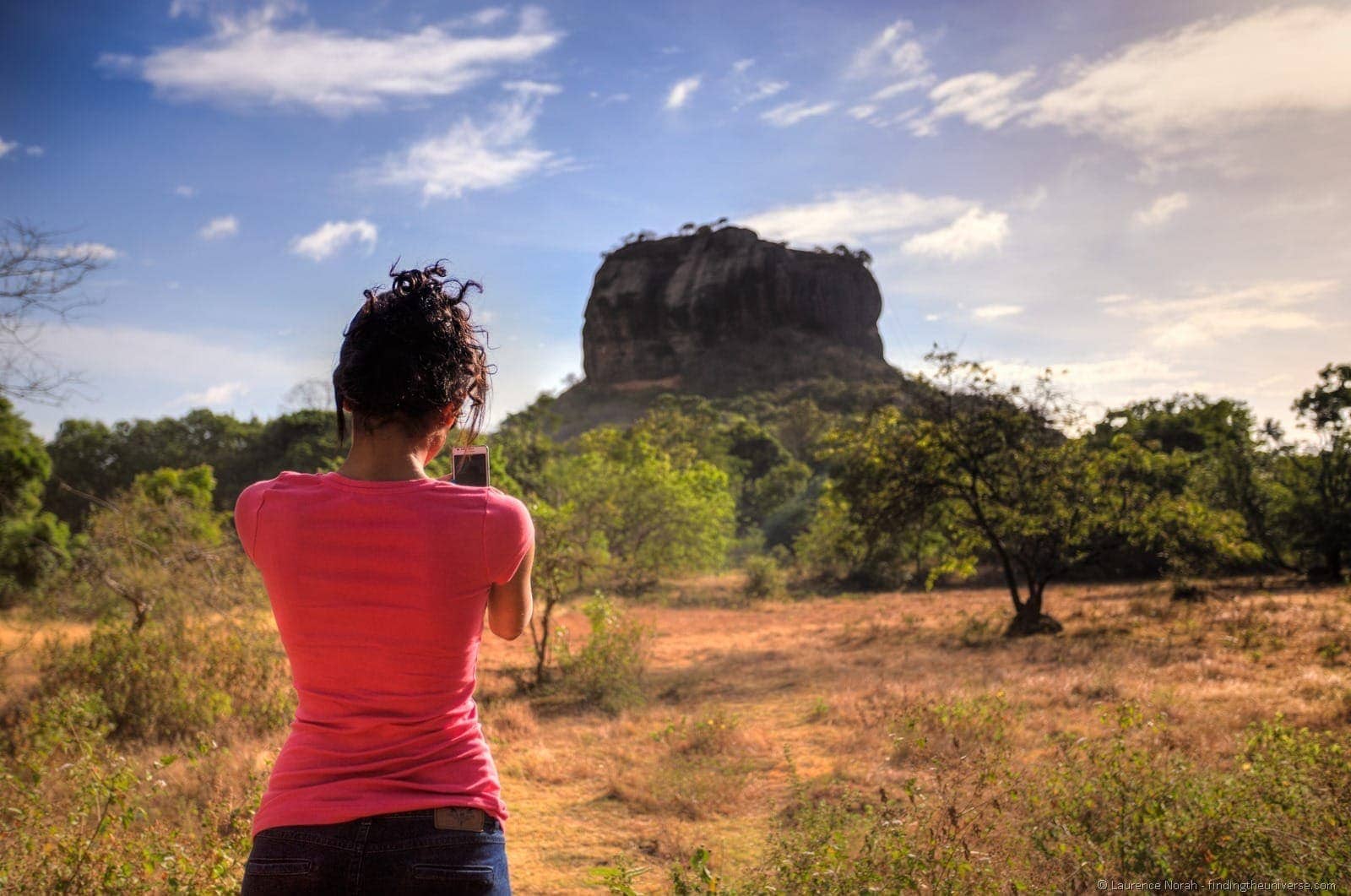
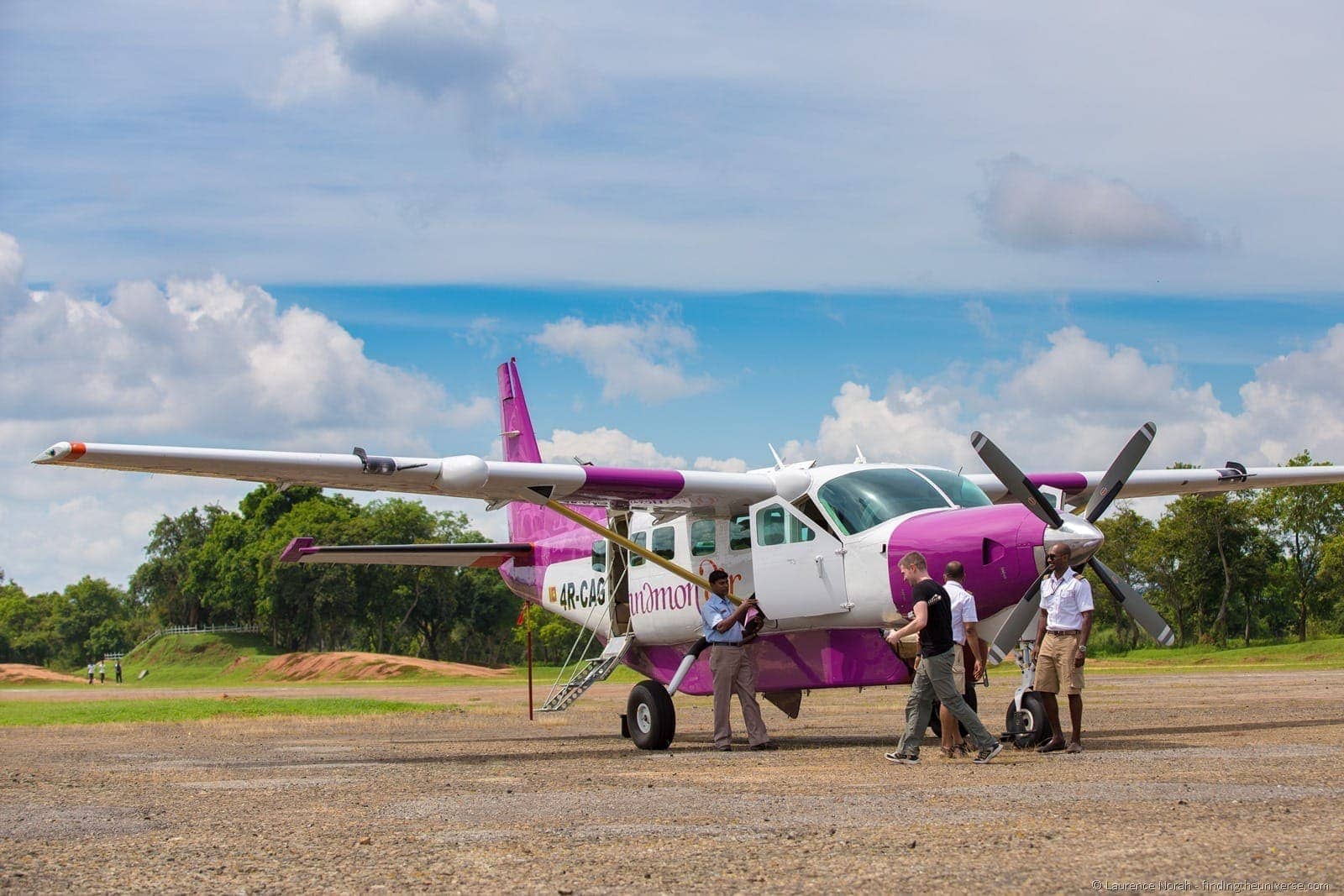
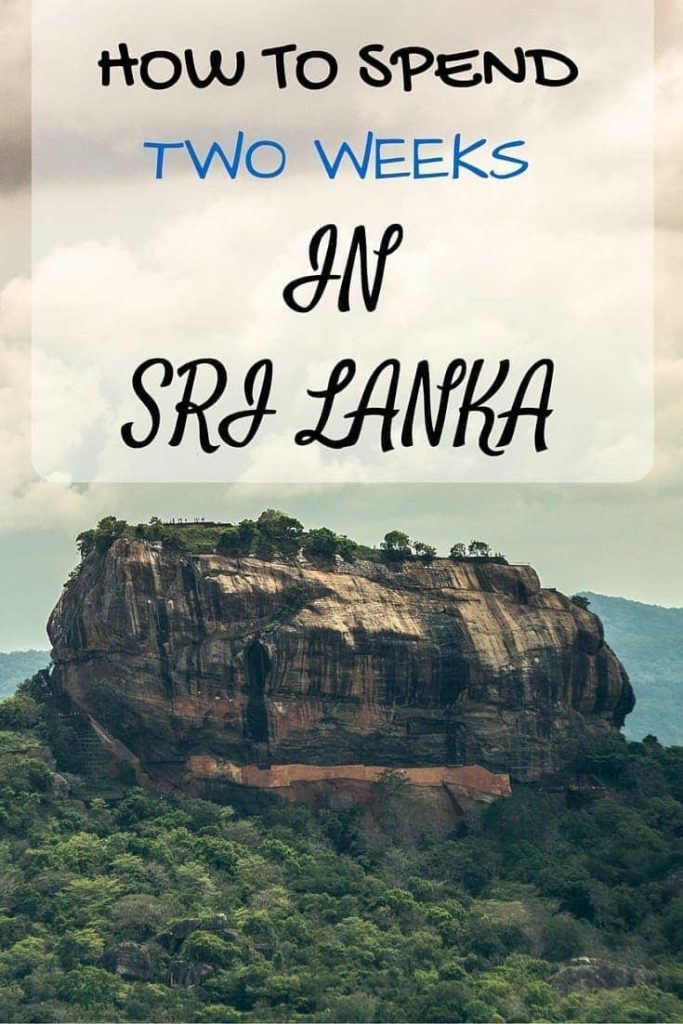
Ajay says
Lovely article
Laurence Norah says
Thank you 🙂
Leah Drey says
Hi!
Thanks for sharing this. I just have a few questions about getting back from Yalla to the airport/
– Can you share how long it would take to get from Yala to the airport? Google is failing me.
– Would you recommend driving or alternative method of transport to get back to the airport?
– Would it make sense to return from Colombo airport or do any of the others make more sense?
Laurence Norah says
Hey Leah,
So it’s around a 6 hour drive from Yala if I recall correctly. Driving is likely to be the best option, I believe there are also flights from a nearby airport from Yala to Colombo, but I’m not sure how regular they are.
When you say return from, do you mean fly from out of Sri Lanka? I think that’s the only logical option to be honest. A new international airport, Mattala, did open in 2013, but I don’t think there are any scheduled flights from there.
Have a great trip!
Laurence
Chris says
Hi Keith Forbes
I’m also taking my 2 teenage daughters to Sri Lanka at Xmas next year so I’d love to know what your daughters thought of the trip and what their favourite parts of it were.
keith forbes says
Lawrence,
Thanks for taking the time to put this all together. Great information and really well structured.
We’re travelling to Sri Lanka for NYE this year thru to mid Jan with two 16yr olds and a 13 year old – all girls. Any tips on Galle or nearby for NYE? Also is there a central resource for train travel between the key locations?
We arrive after lunch so we’re thinking of getting the train south (skipping Colombo) a few days around Calle then onto Yala, up to Kandy and if we have time Habarana and surrounds or maybe Colombo for a few days.
Thanks,
Keith
Laurence Norah says
Hi Keith,
My pleasure! For train travel, I always like the man in seat 61, and he has a good entry on Sri Lanka which should be useful:
https://www.seat61.com/SriLanka.htm
I’ve not stayed in Sri Lanka for New Years, so can’t comment, but the Galle area is lovely, as are the surrounds. It sounds like your itinerary is a good one! Have a great trip 🙂
Zahava says
Hi Laurence. That’s The best blog I found, regarding Sri Lanka. Thanks!
We are planning a 2 weeks trip during the Christmas break, with 3 children 11, 16, 20.
I Was wondering what itinerary would you choose if we would like to spend the last week relaxing at the beach?
Also, one of my daughters is Celiac, do you think the hotels you recommended will be able to
Attend her needs of should we look for a more upscale hotels for that reason?
Zahava. London.
Laurence Norah says
Hi Zahava,
Thanks very much! So for that time of year, the south west of the country is going to be in its dry season, so you should have better weather in the south west of the country. So I would suggest the region of the coast from Galle and south would be the best option, it has some great beaches and you should get the best weather. Just be aware that prices will be a bit higher in this region at this time of year.
If it was me I would probably follow this itinerary fairly closely, as the last week is easily adjustable to take in more beaches and less sight-seeing 🙂
I’m not an expert of Celiac travel, but I do know friends of mine who travel do find the higher end hotels are often better equipped to deal with this sort of thing. It might be worth reaching out and asking before booking anything, just to be sure.
Have a great trip!
Laurence
Susie S says
Thanks for the great write up! You mentioned one option for getting around would be to hire a driver. Can you recommend how to book a driver? For example, from Colombo to Habarana and from there to Kandy. And Kandy to Ella. Thanks!
Vicki Majella Hansford says
Hi Laurence I really like you blog
Do you think it is necessary to pre book accommodation before we leave Australia or,can you rock up in places and be sure to find something
Thanks Vicki
Laurence says
Hi Vicki!
I think in many cases you can just rock up, although it depends on the time of year and where you are visiting. We also generally find we get better deals by booking in advance for some reason. So yes, you should be fine, with caveats 😉
Have an awesome trip 😀
Amar Hussain says
Great post Laurence. Looks like you had better weather in Galle than we did!
One thing missing from your itinerary is the Kandy to Ella train ride which is super scenic. The times, fares and how far in advance it books up stumps a lot of people as there isn’t a lot of accurate information online.
I’ve put up an itinerary here and it includes all the info for the train ride – http://gapyearescape.com/backpacking-sri-lanka-two-week-travel-itinerary/
Laurence says
Thanks Amar – yes, we had a great trip and wonderful weather most of the time. Thanks for sharing your post, much appreciated!
Green Global Travel says
Thanks for sharing these great pictures and travel tips! It’s always important to know what kind of plug is needed and if tipping is normal. – Janeen
Laurence says
My pleasure, thanks for commenting 🙂
Laurence says
I completely agree, the mid-range options are excellent value for money 🙂